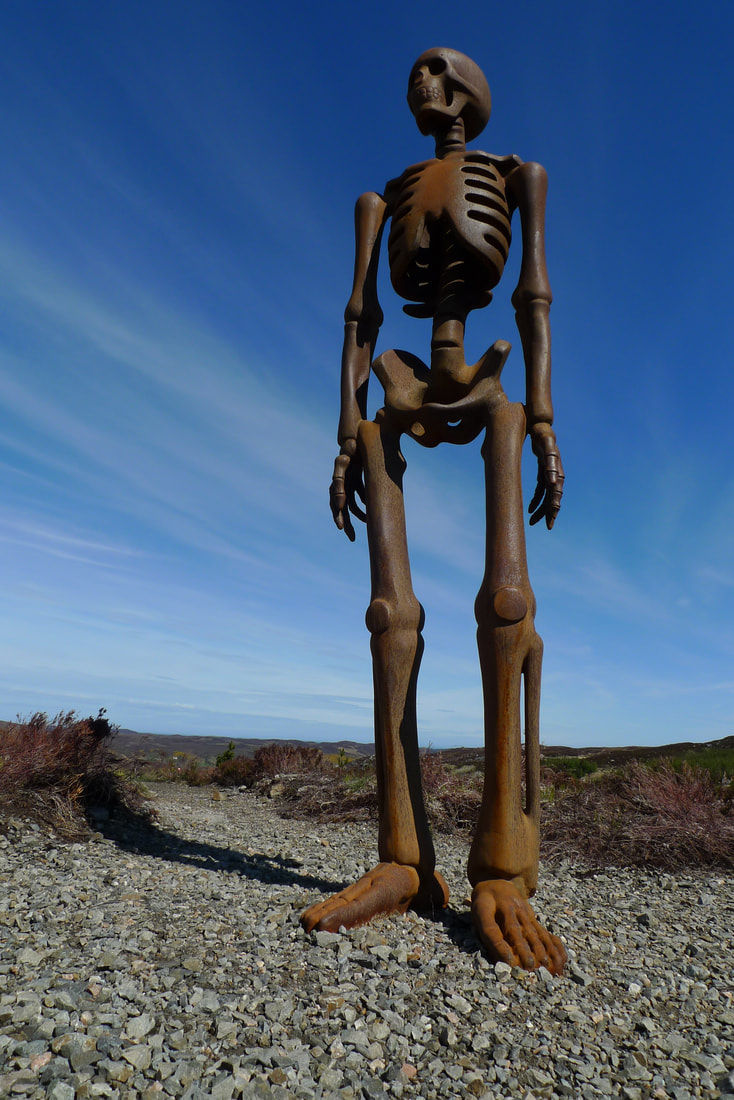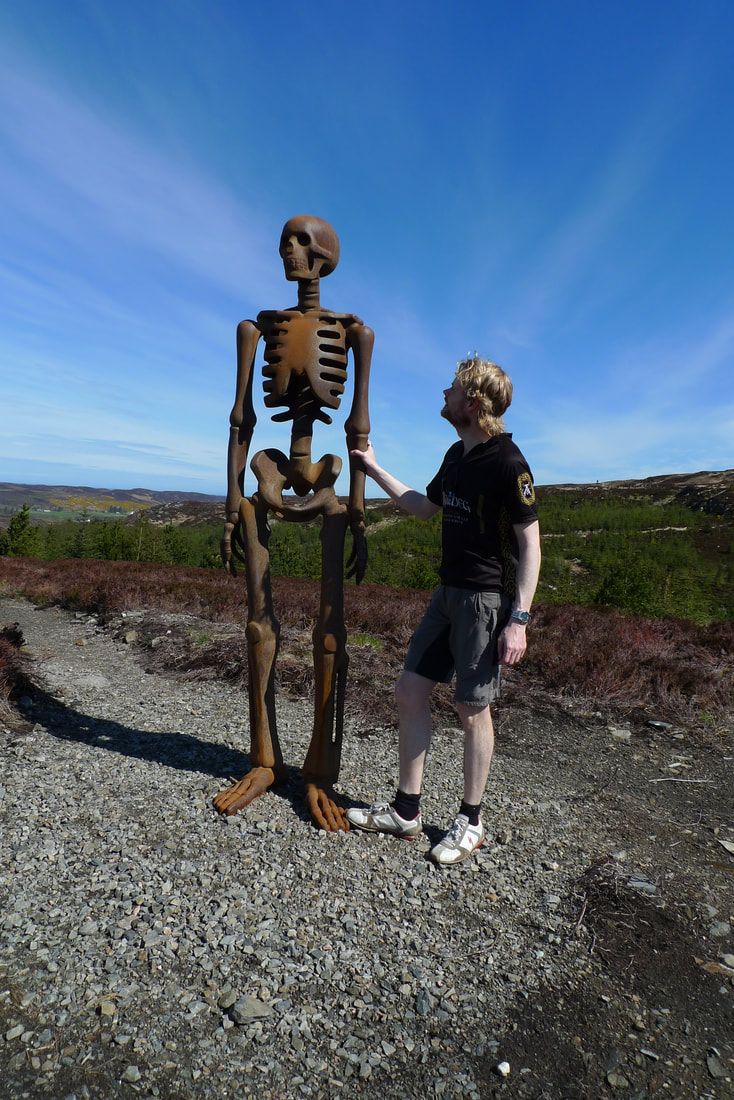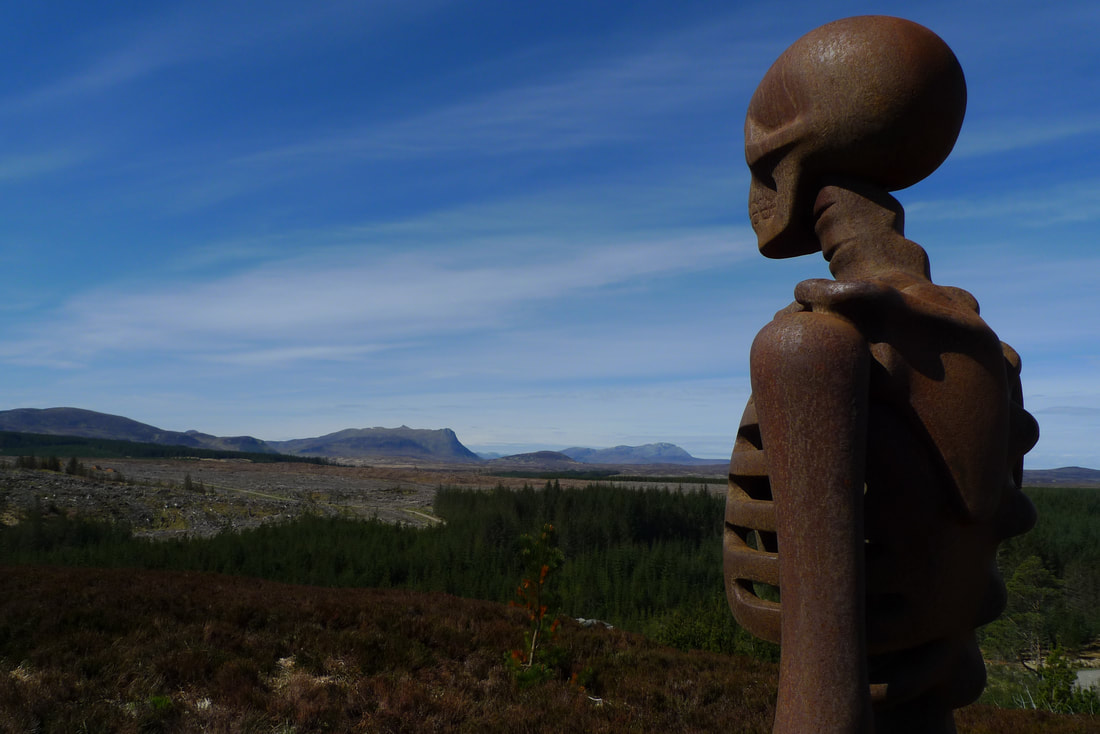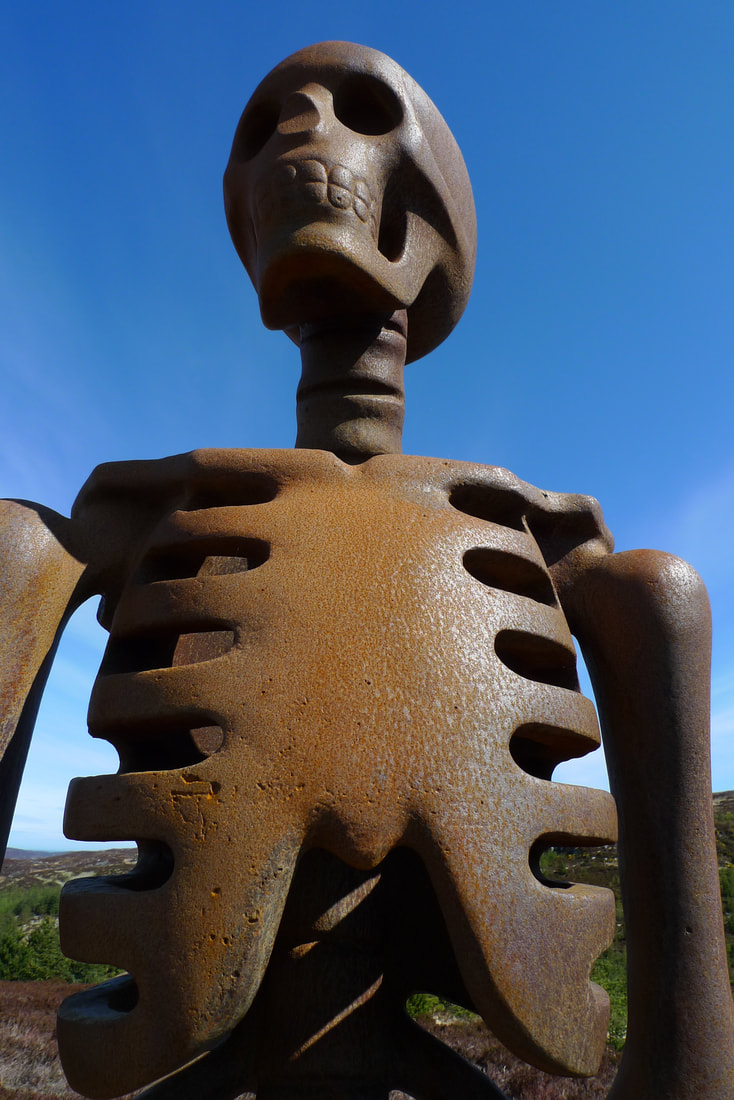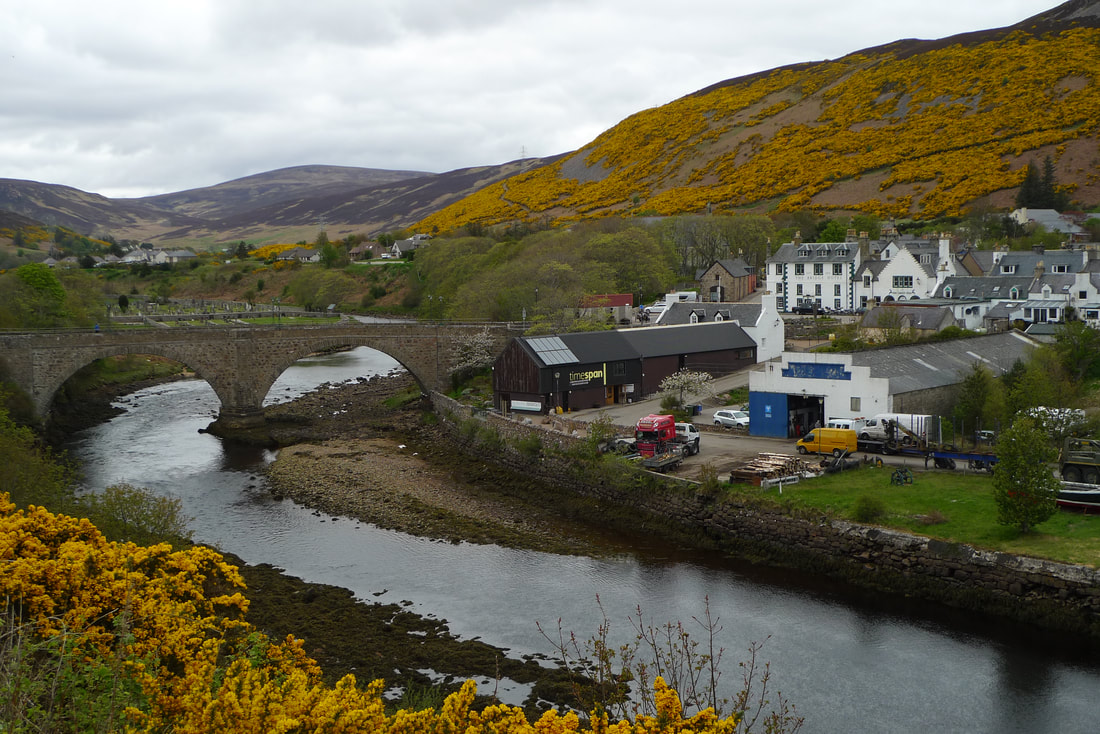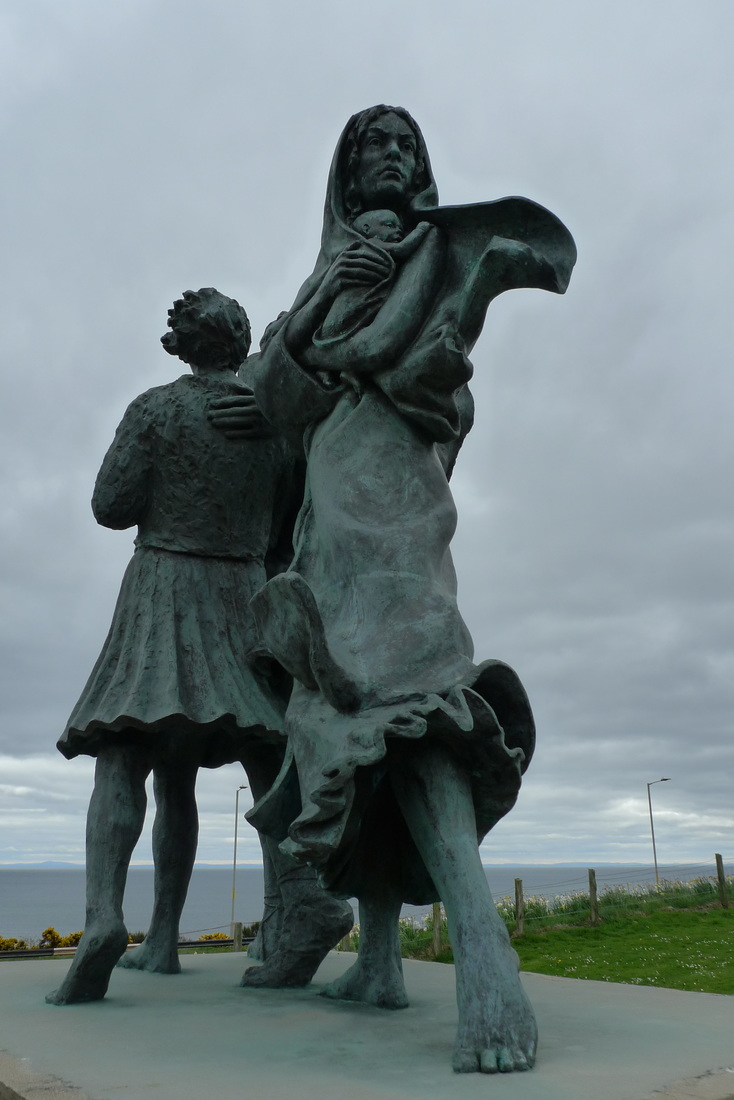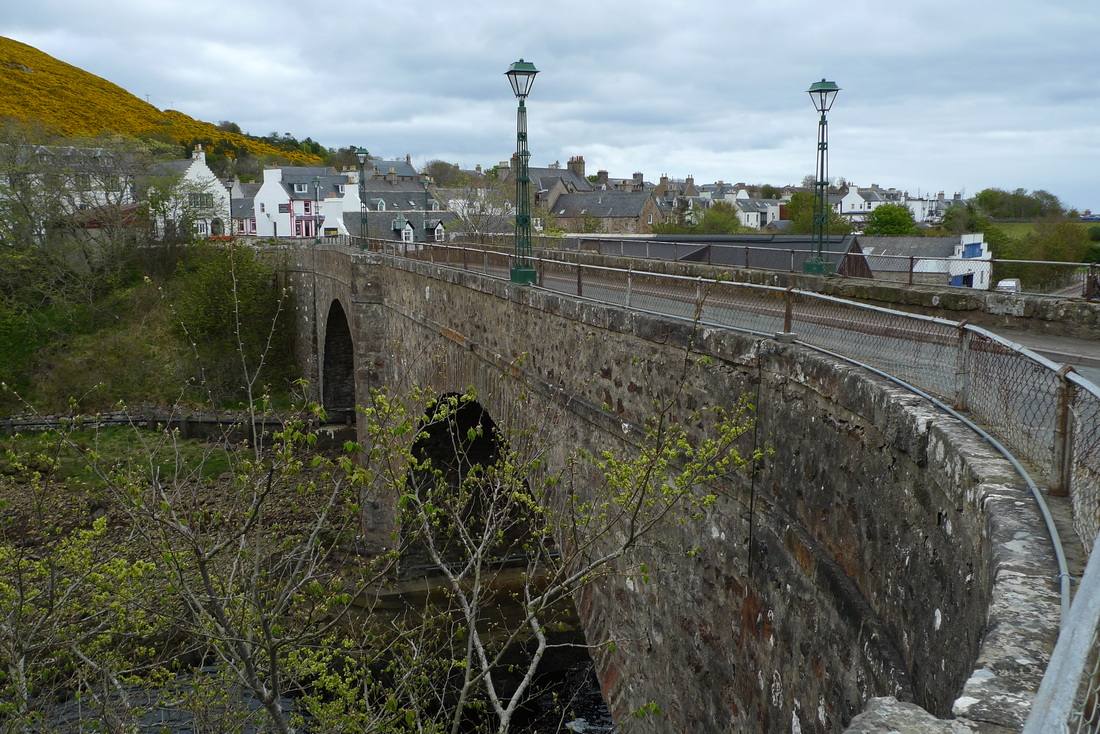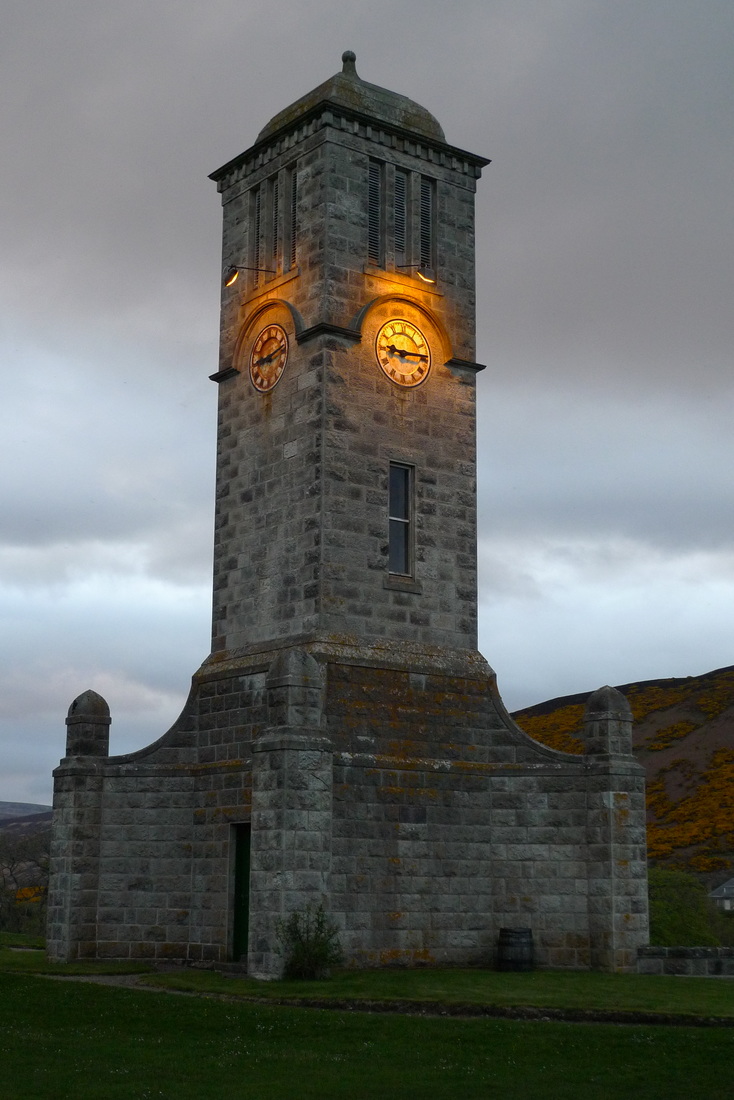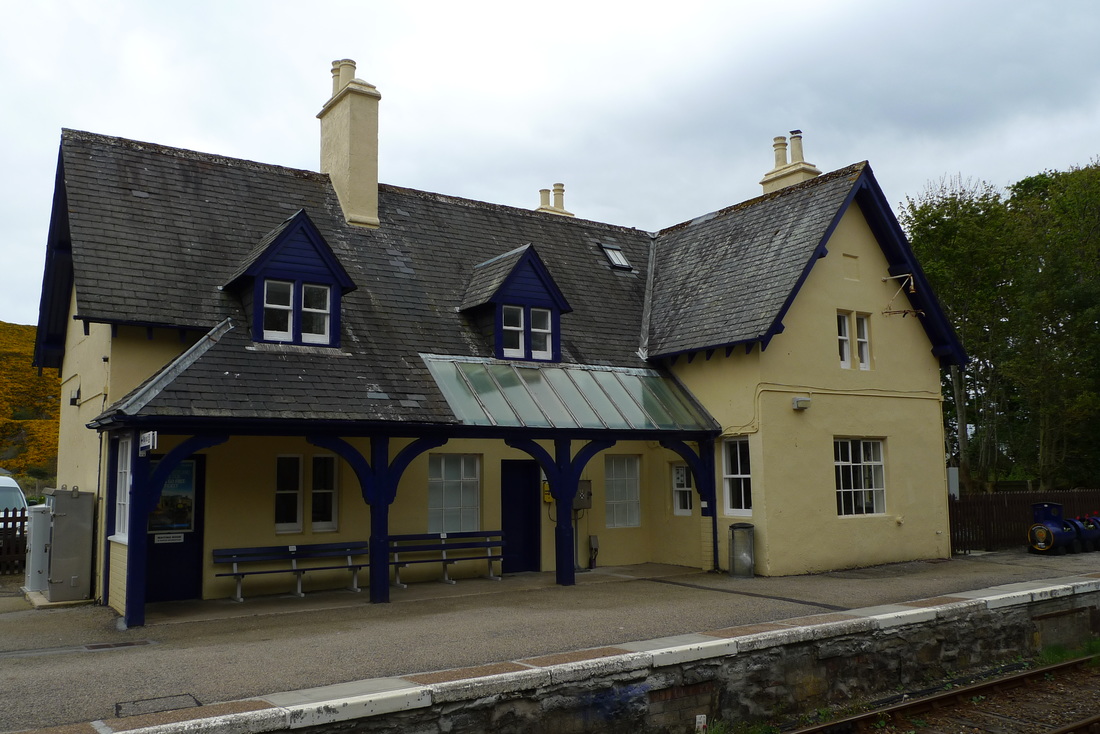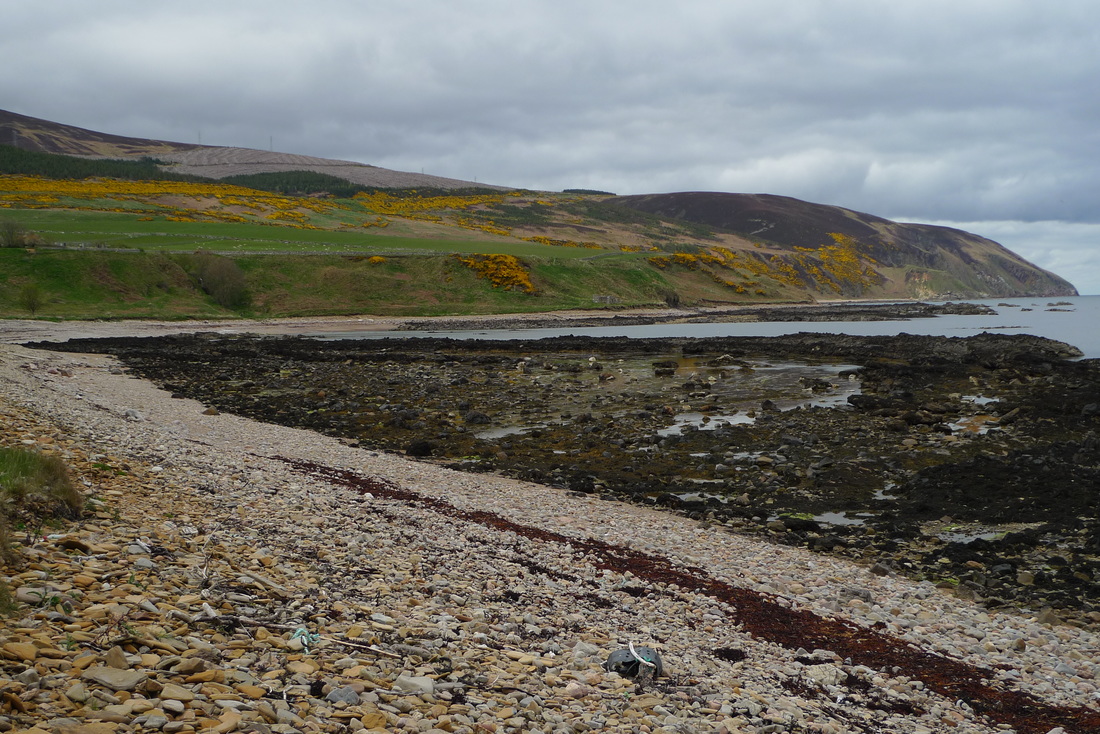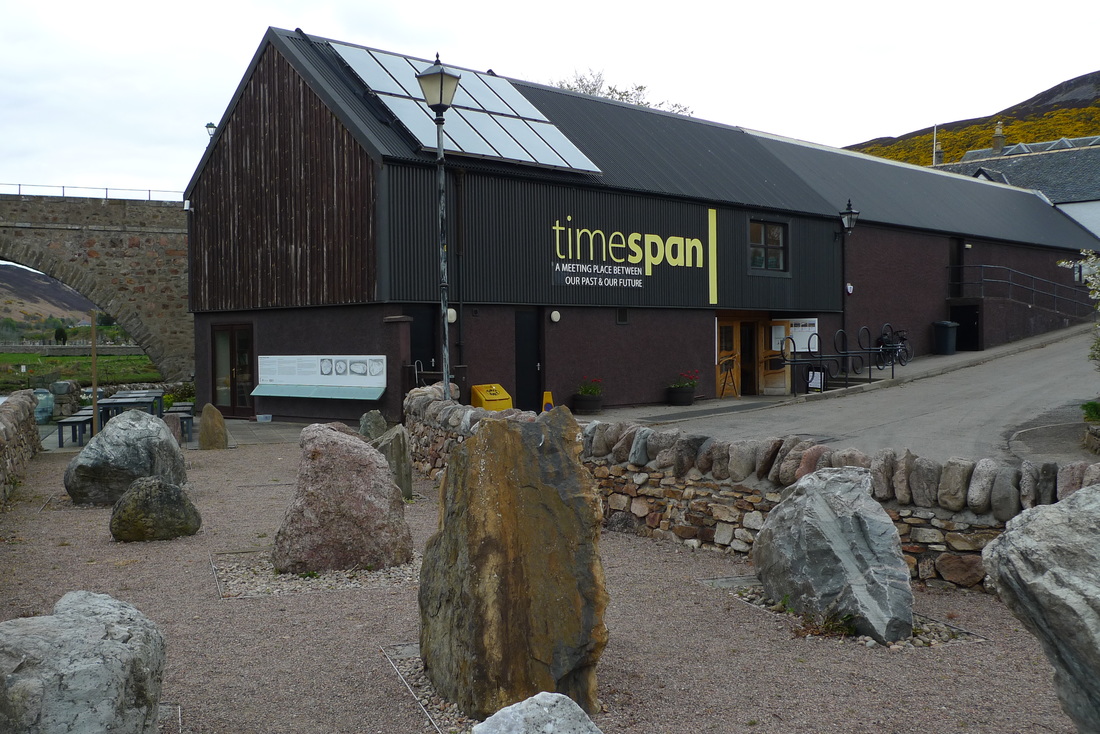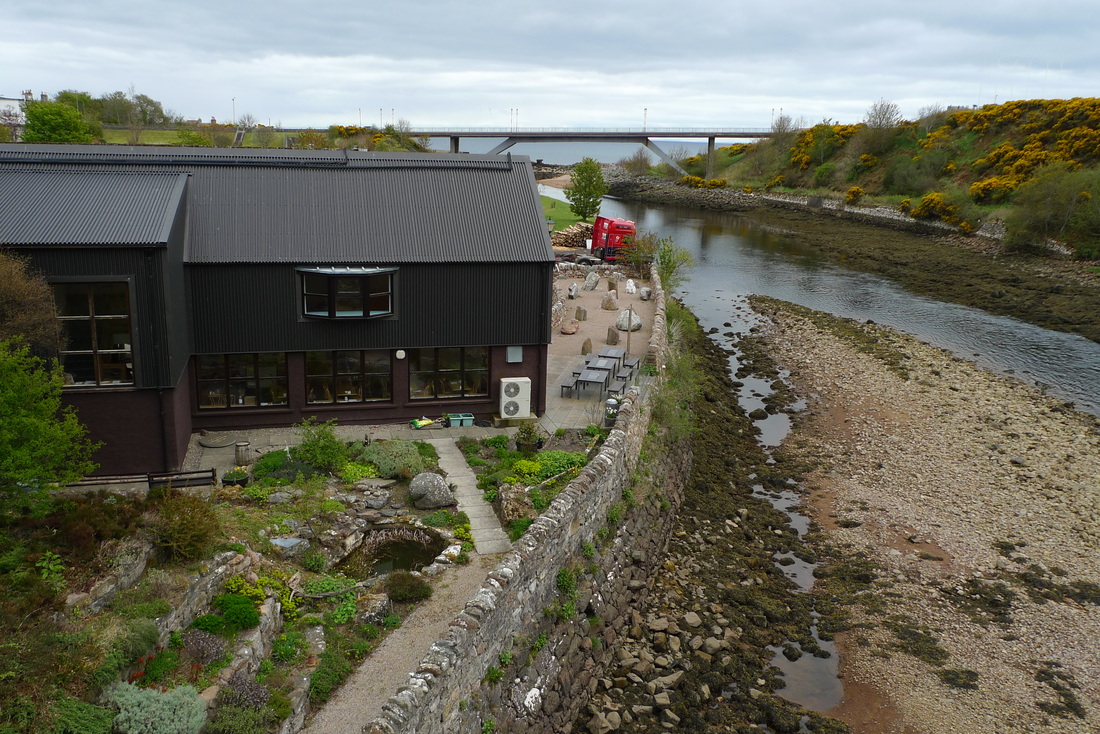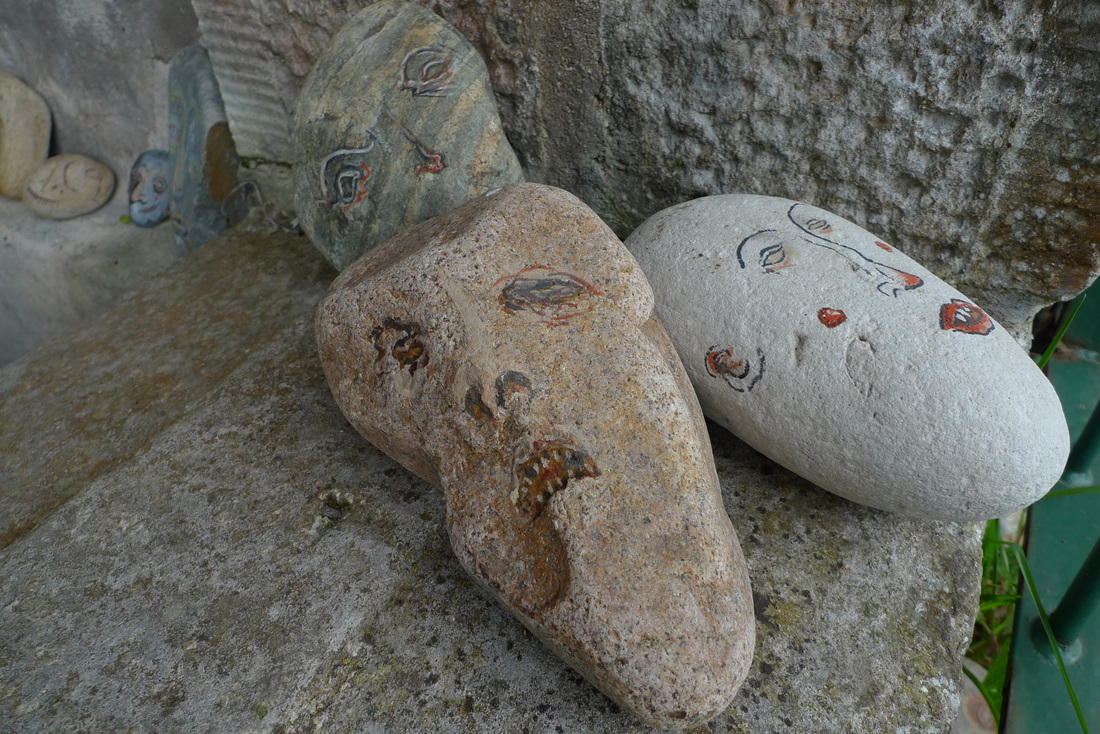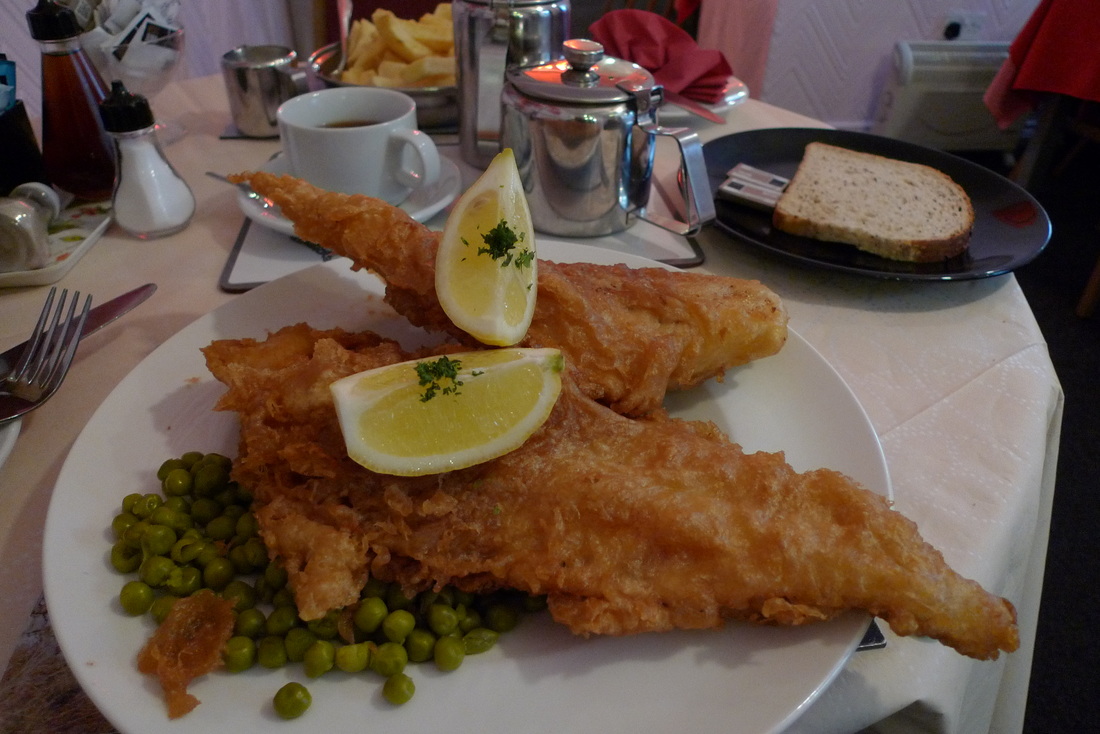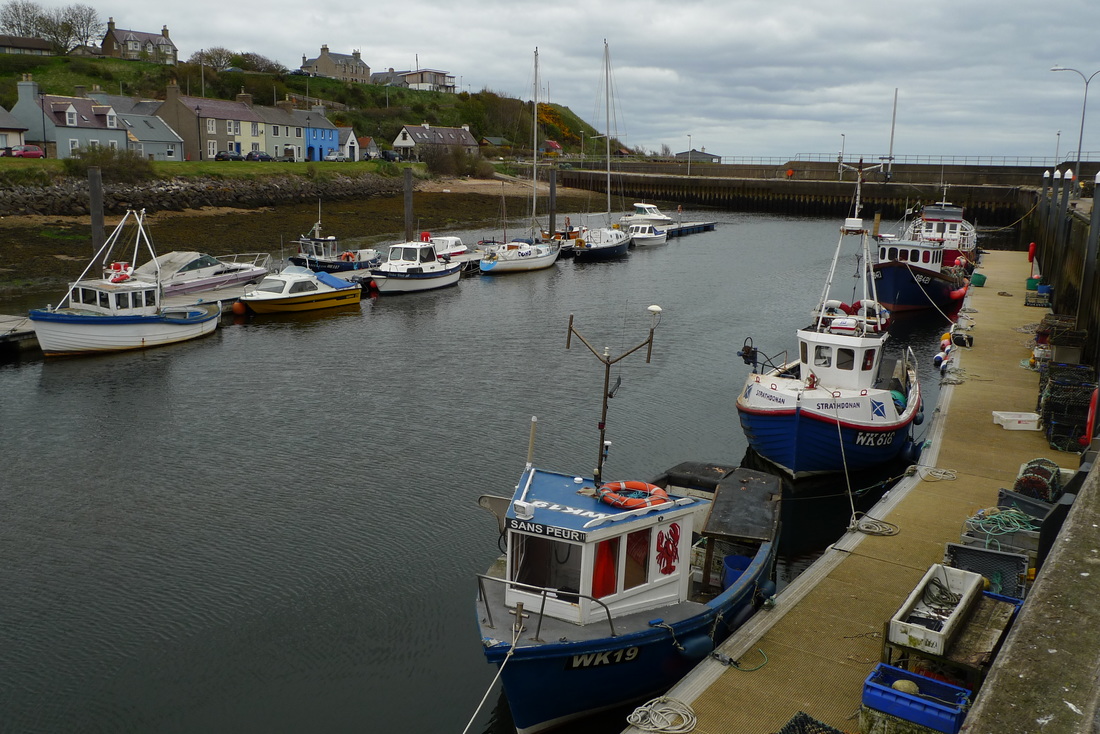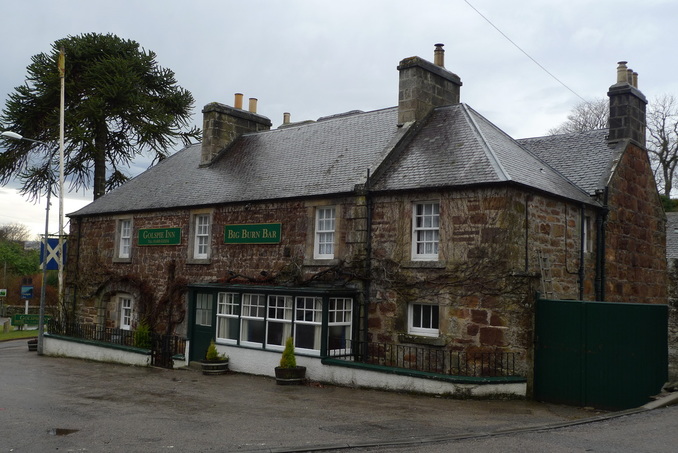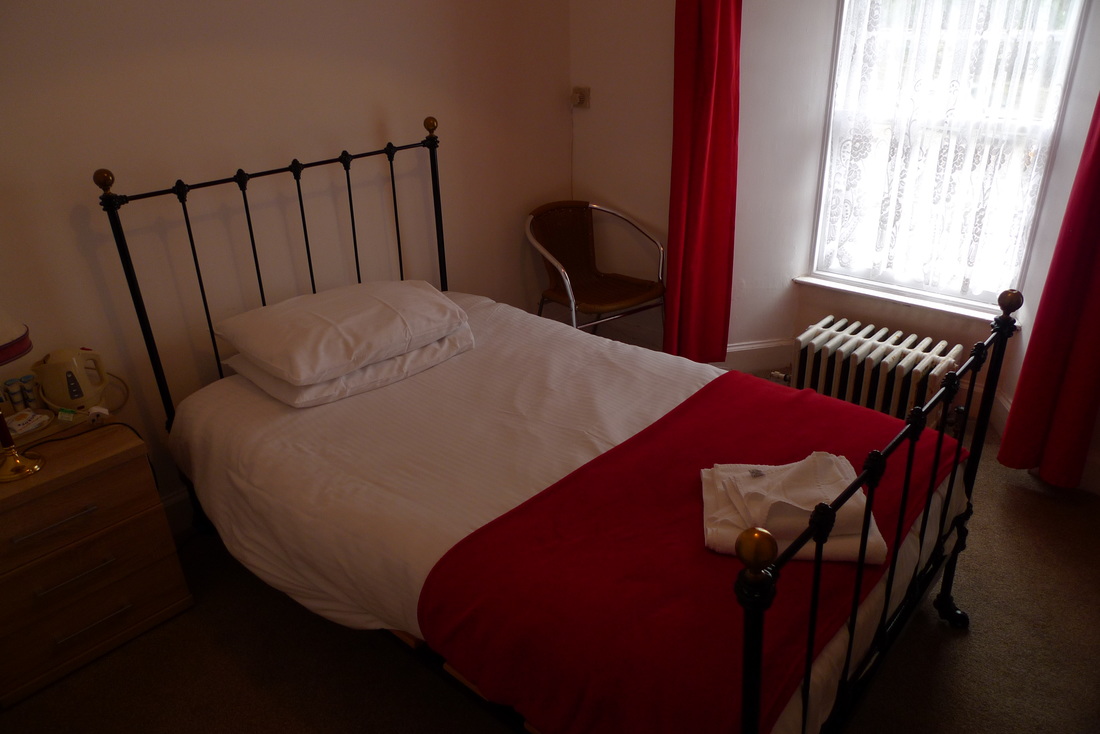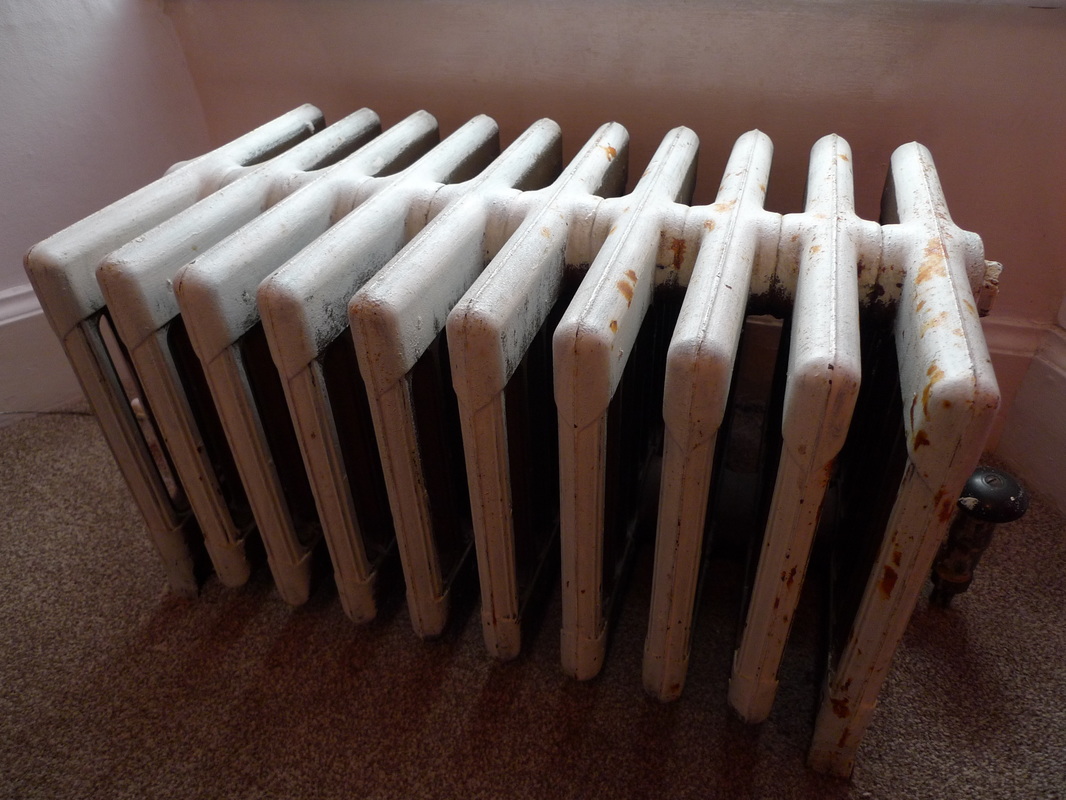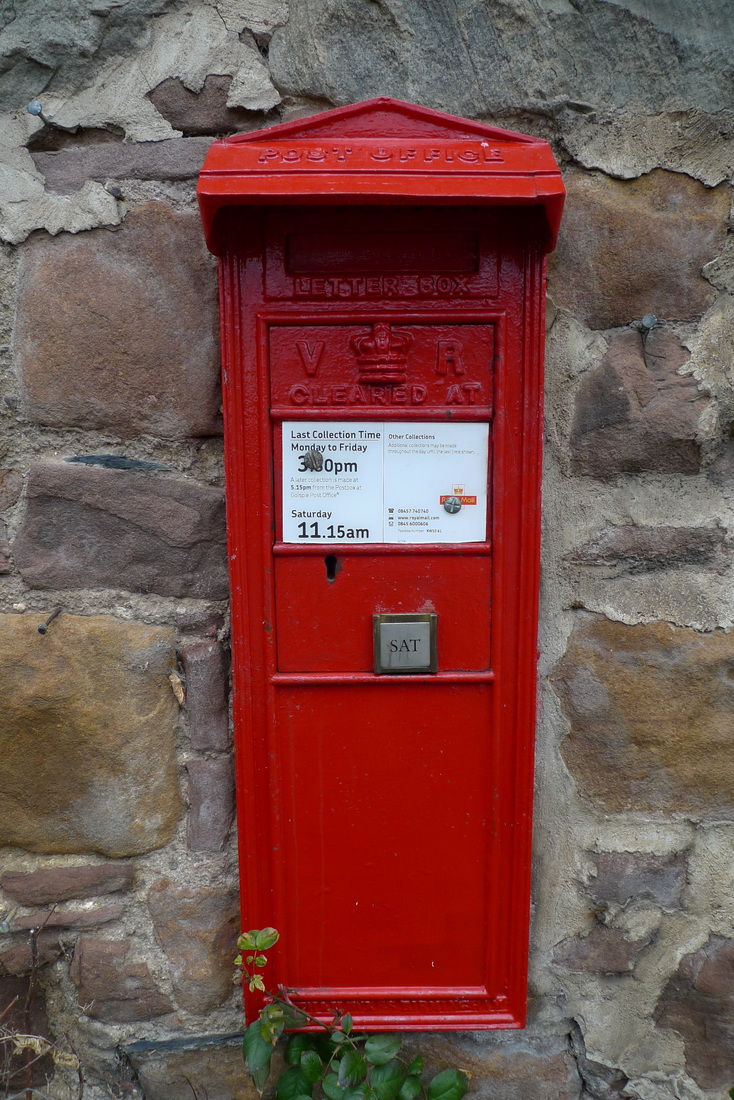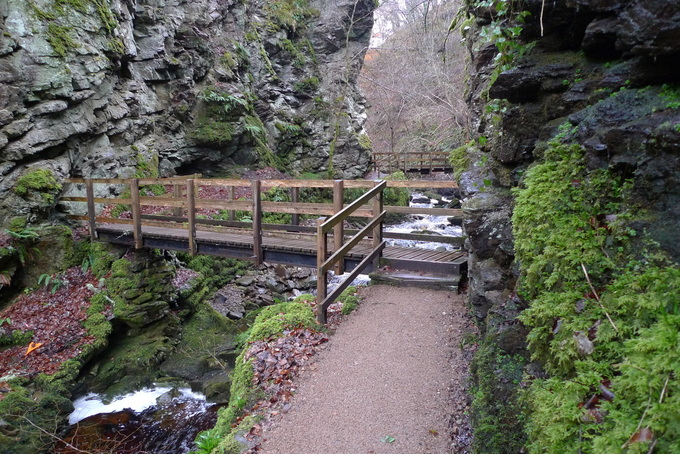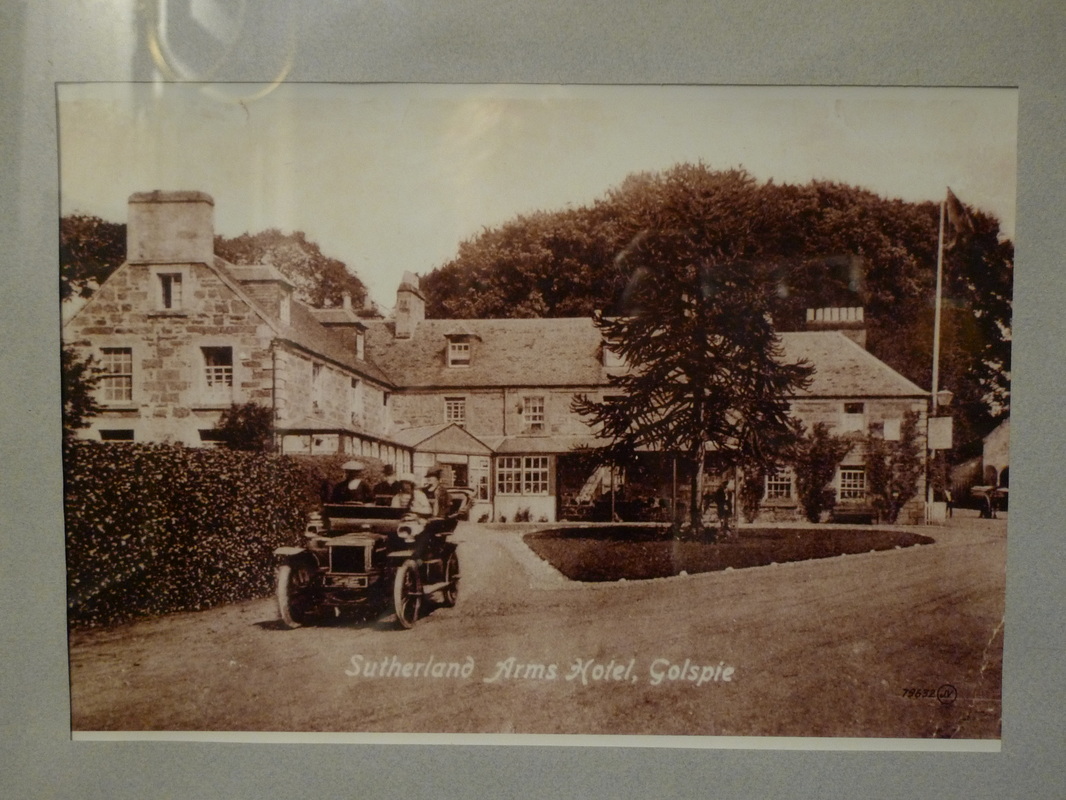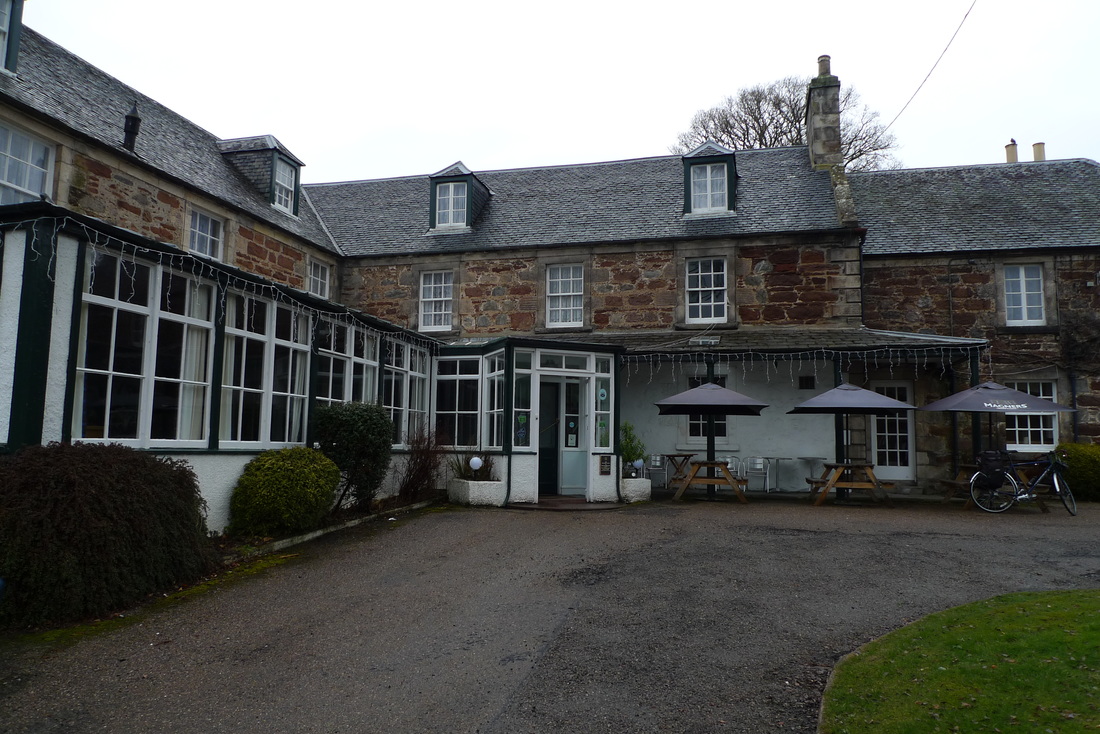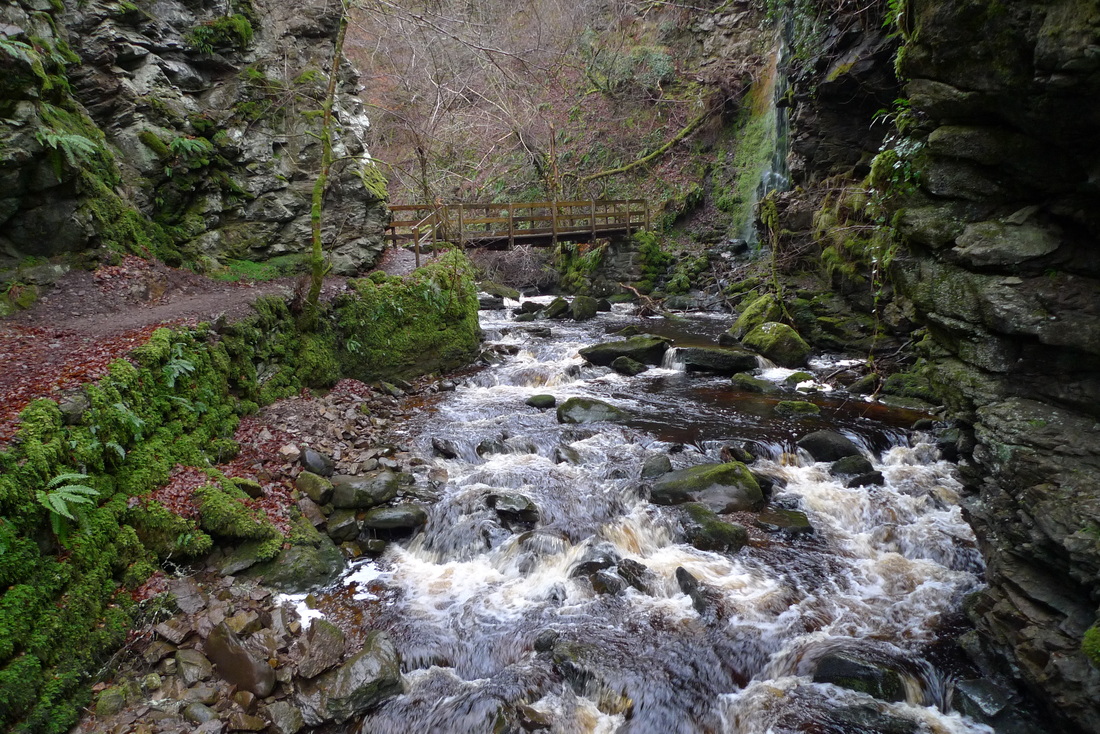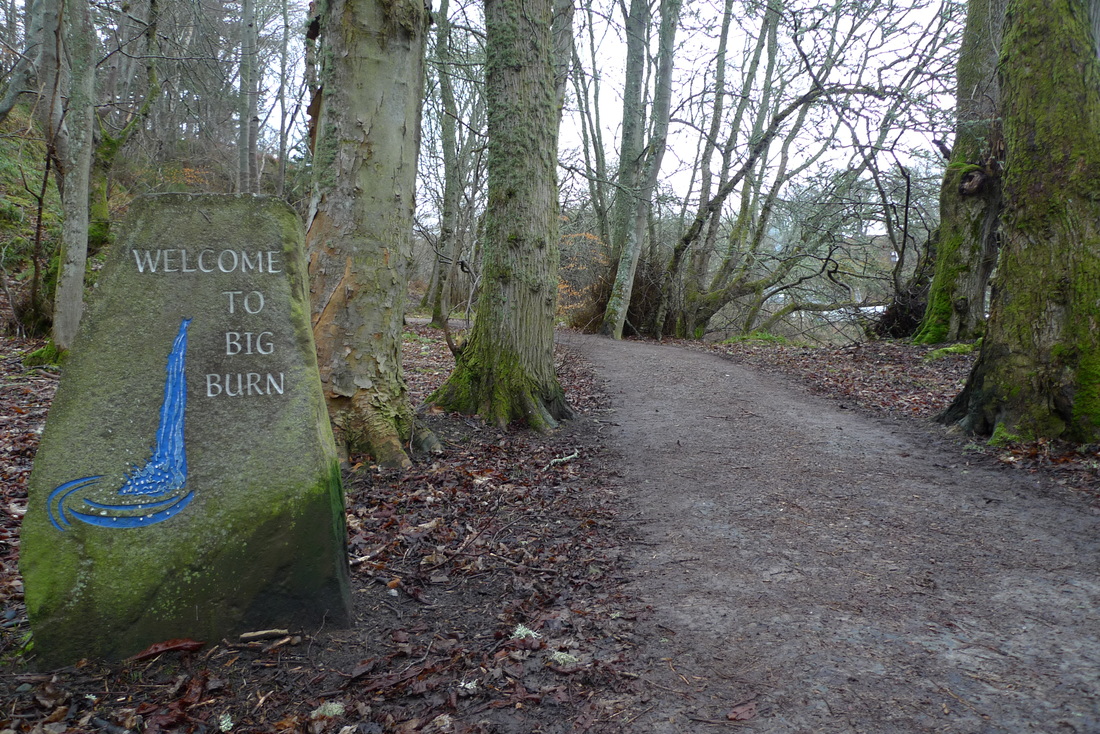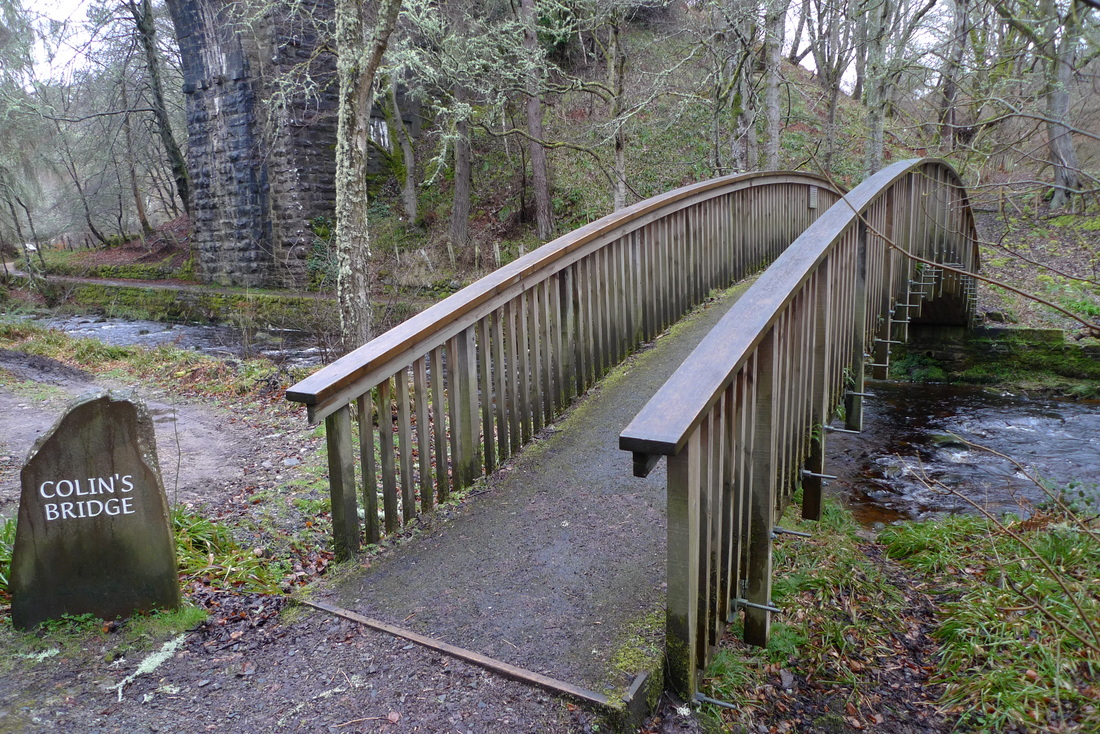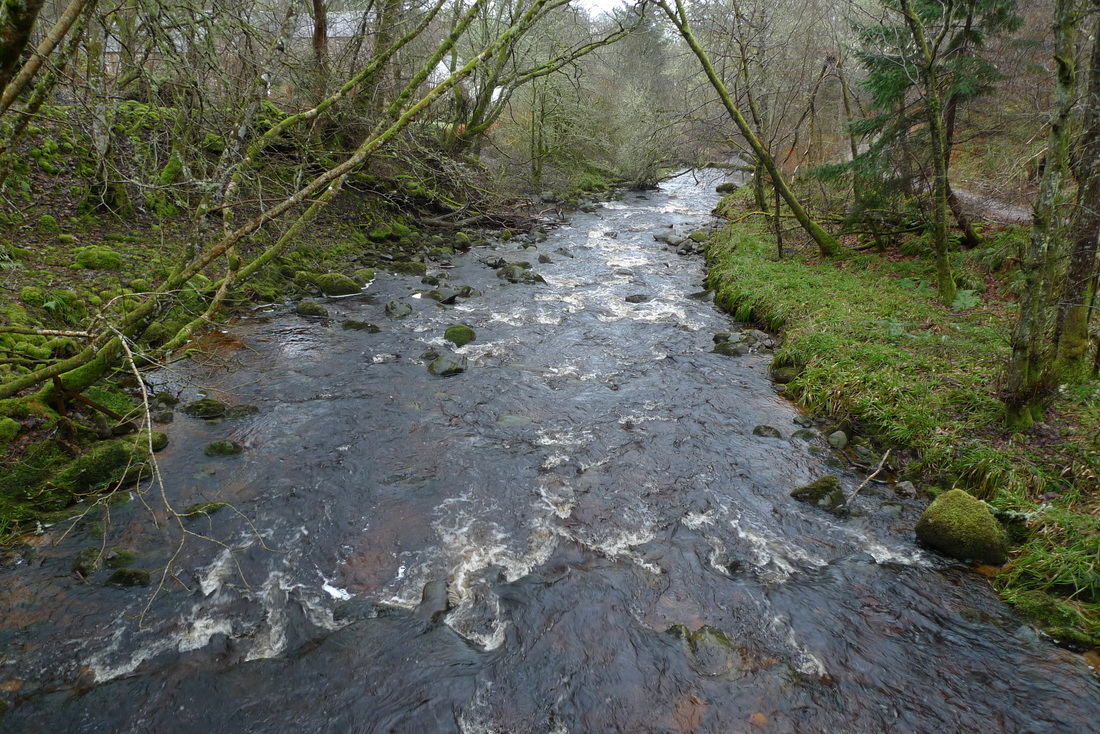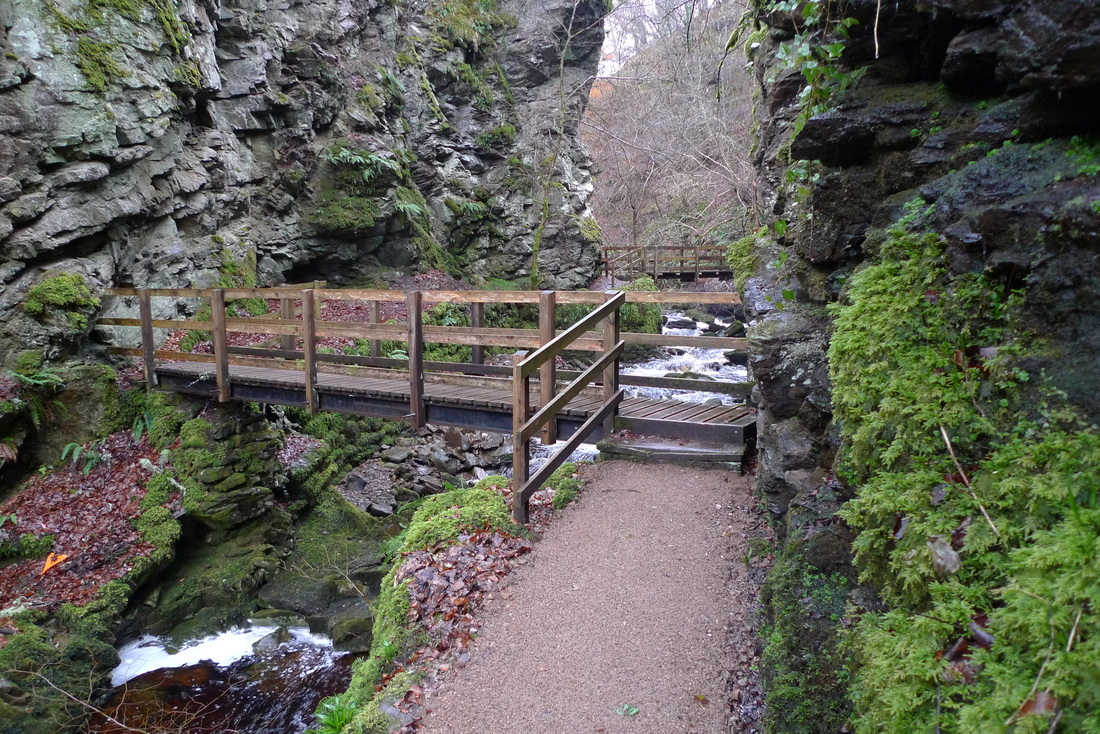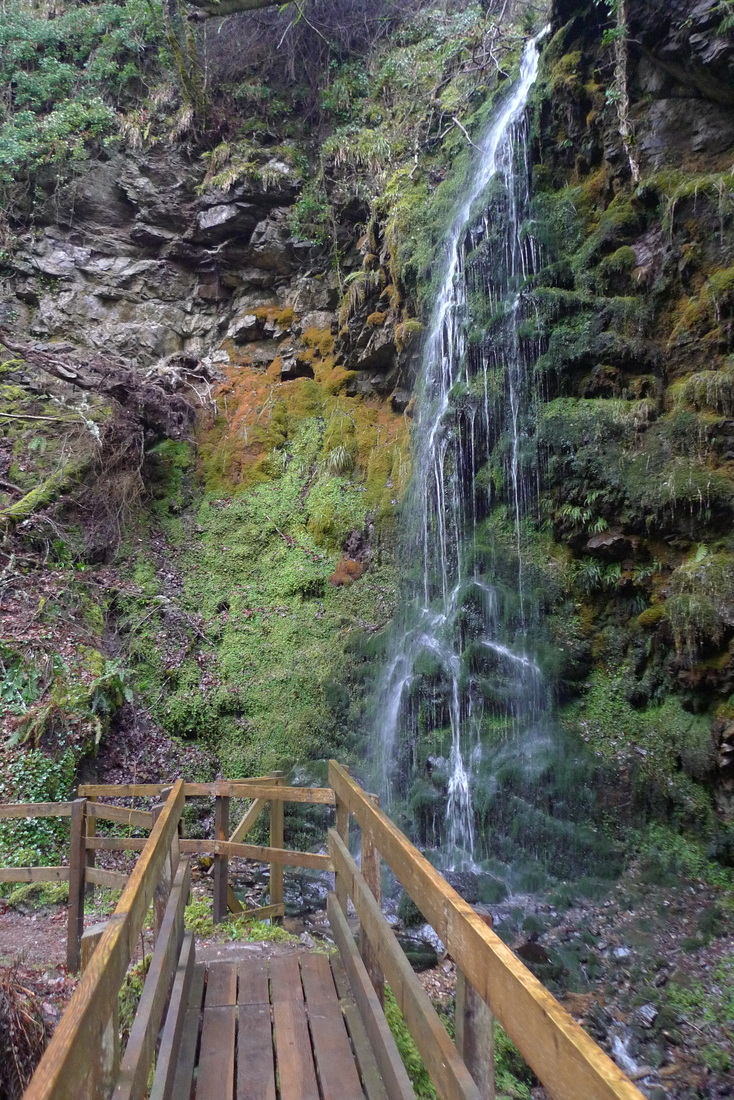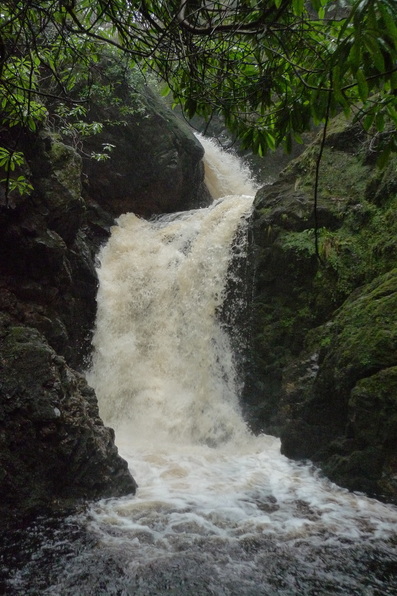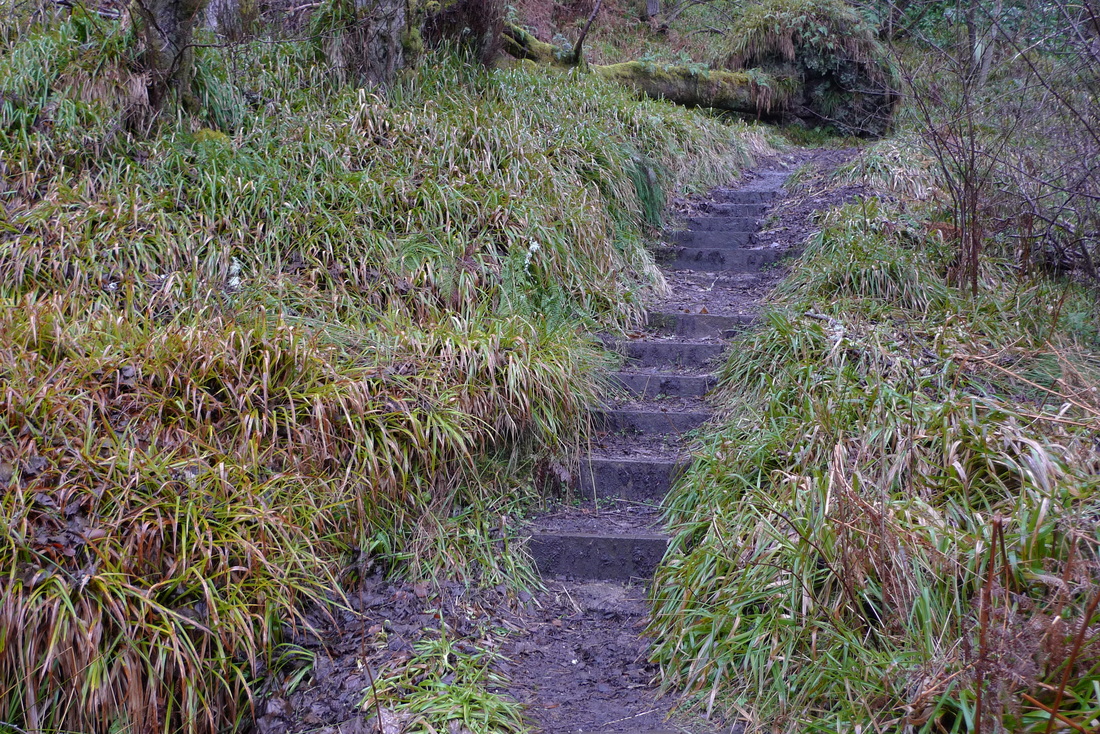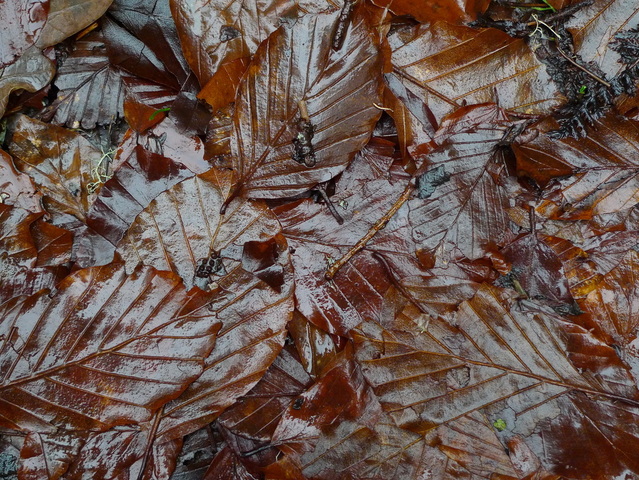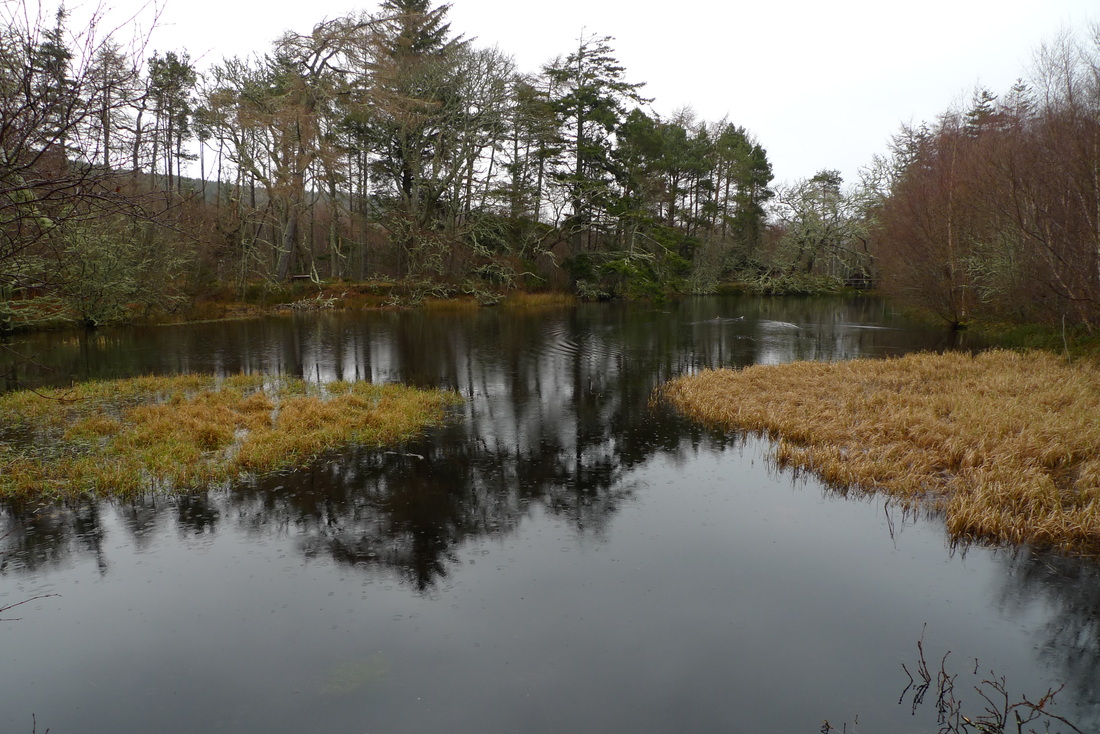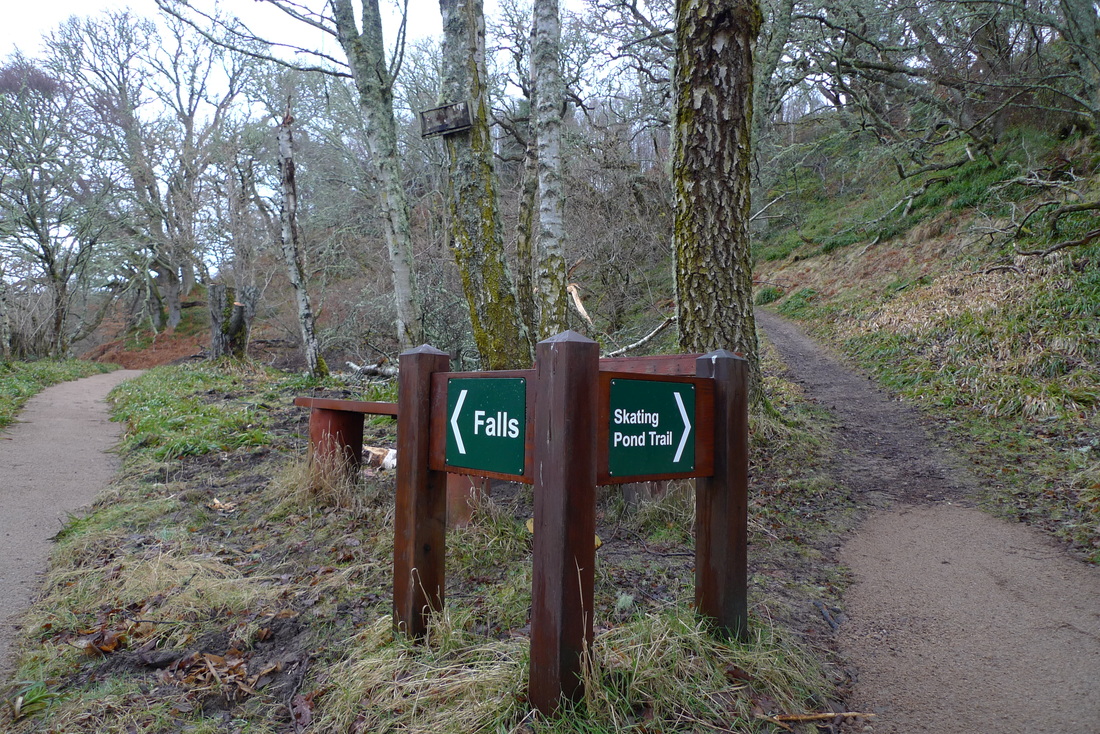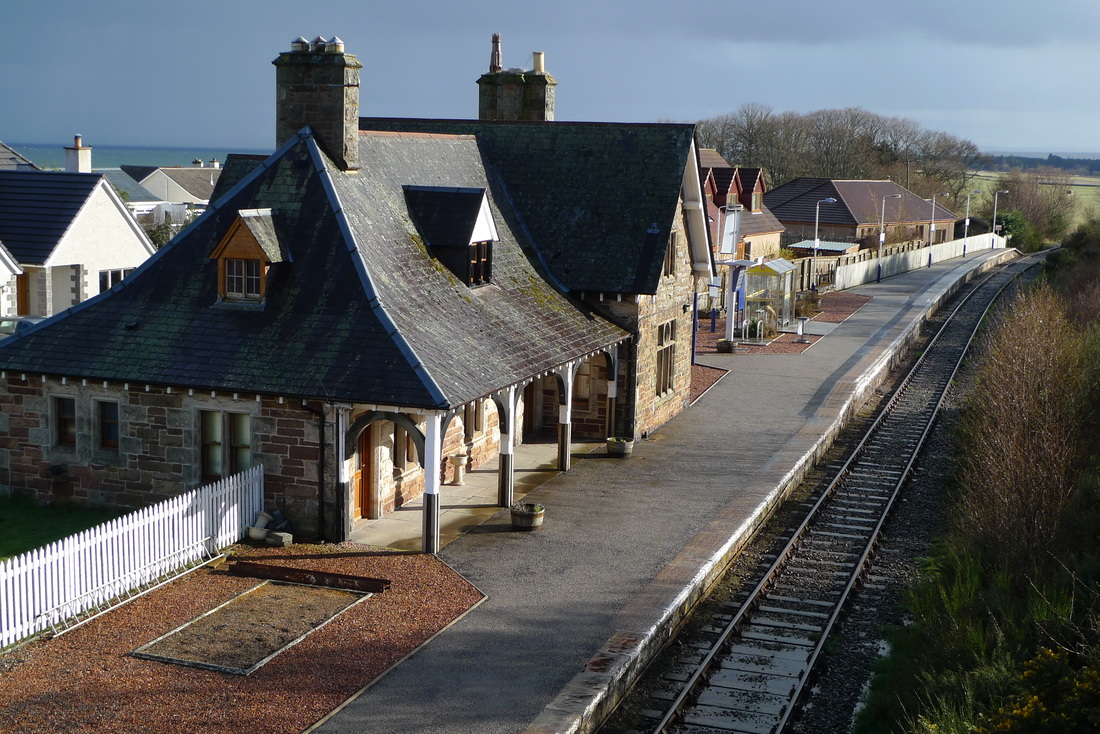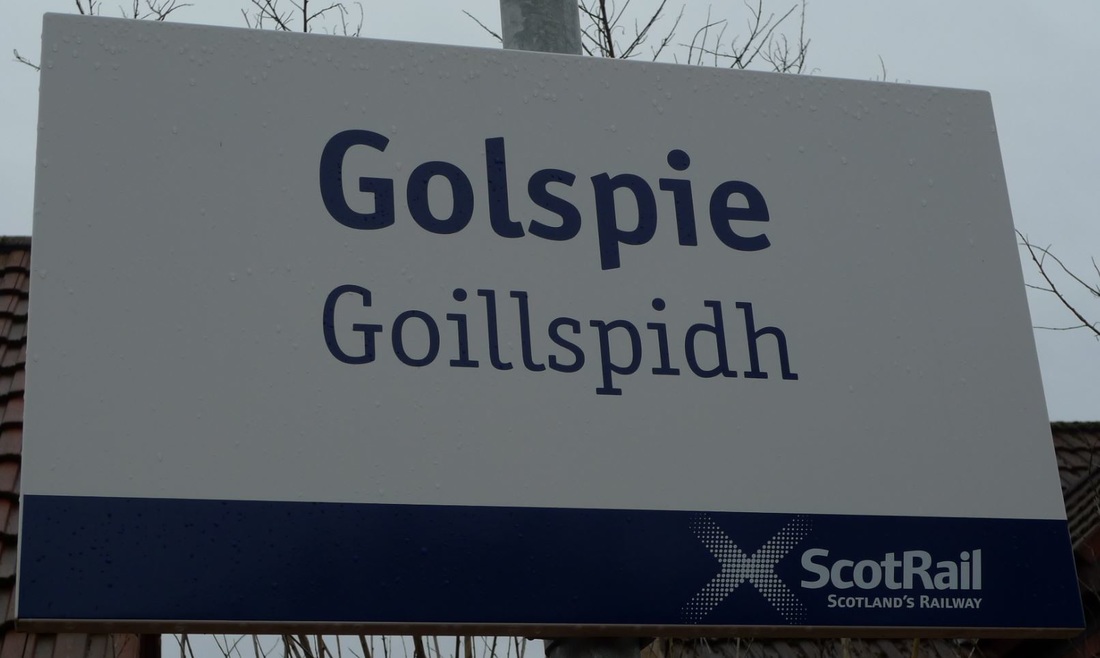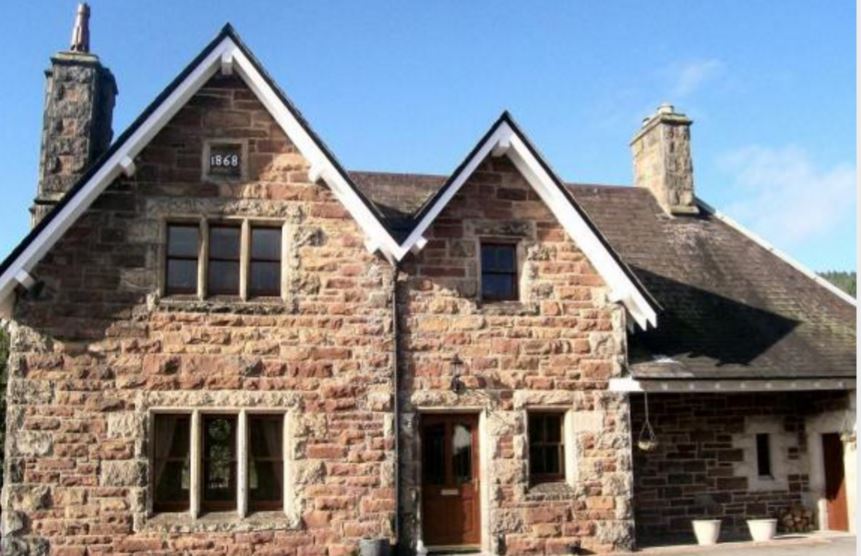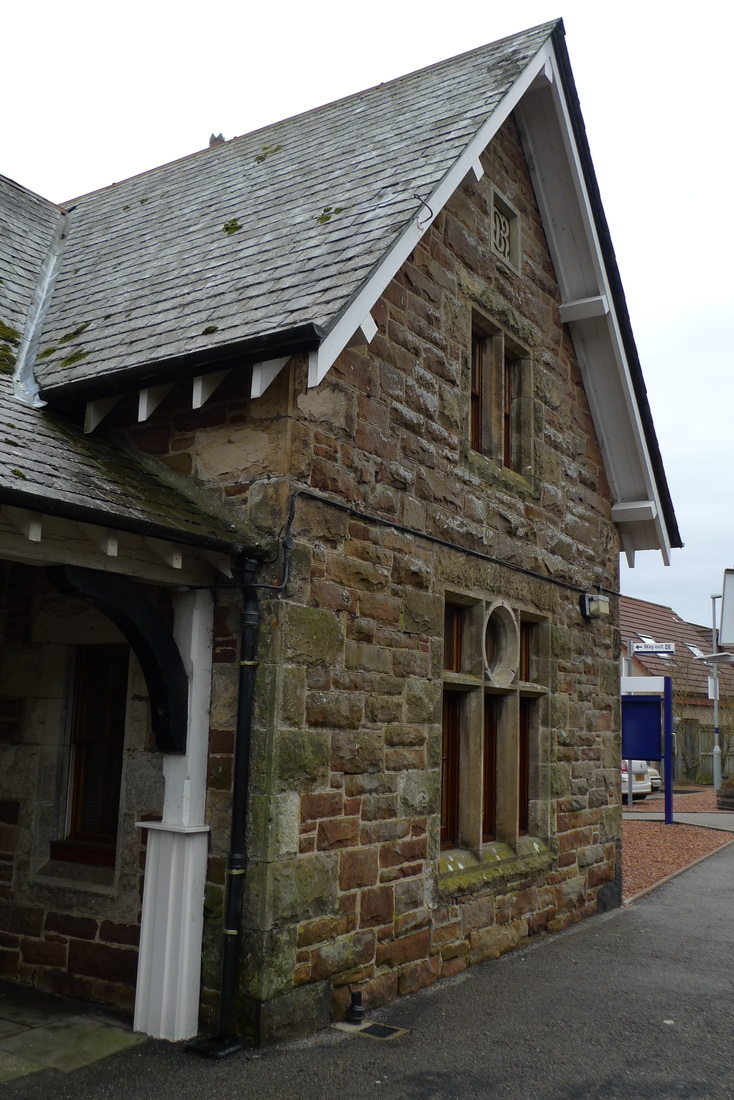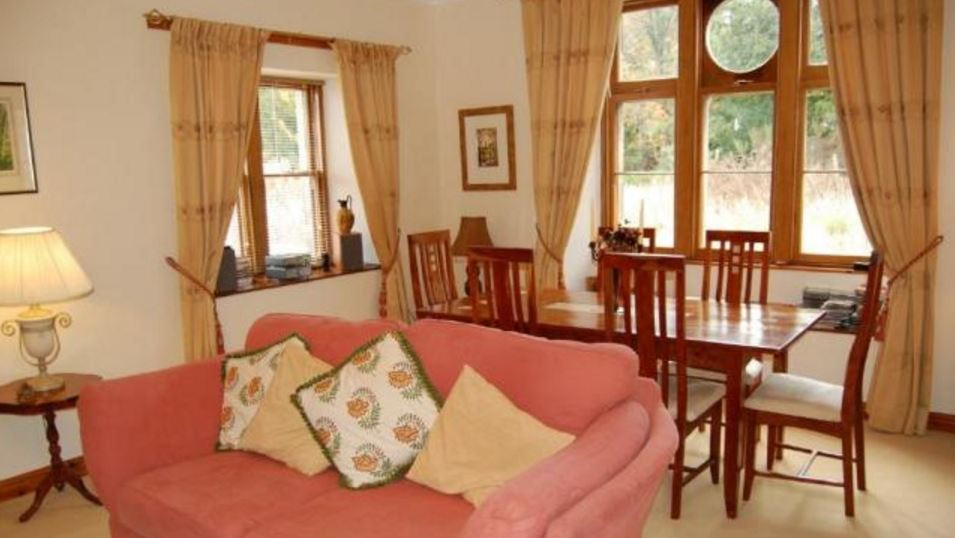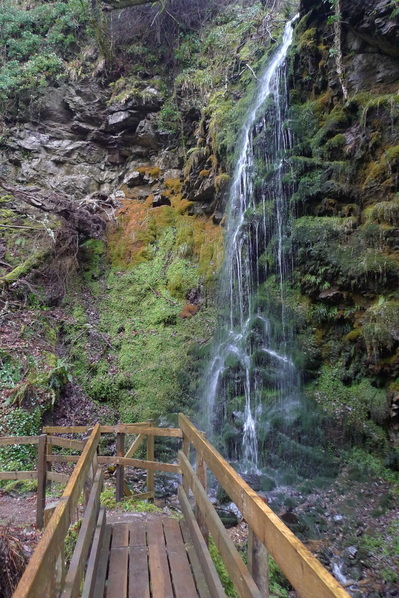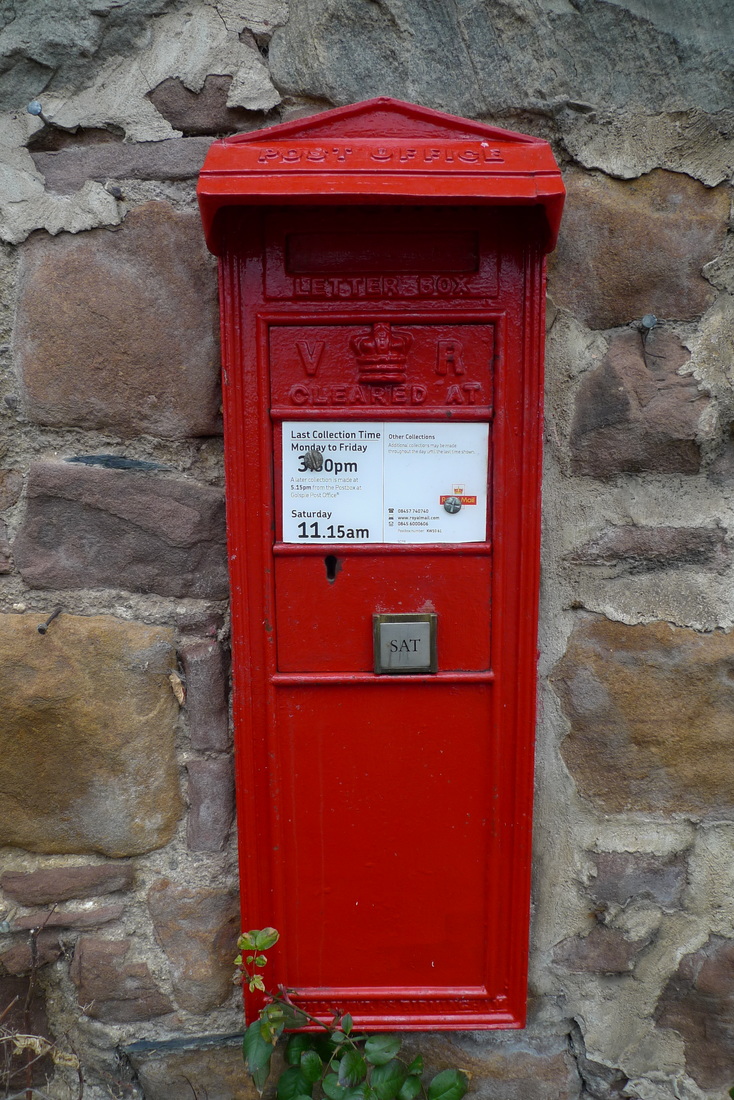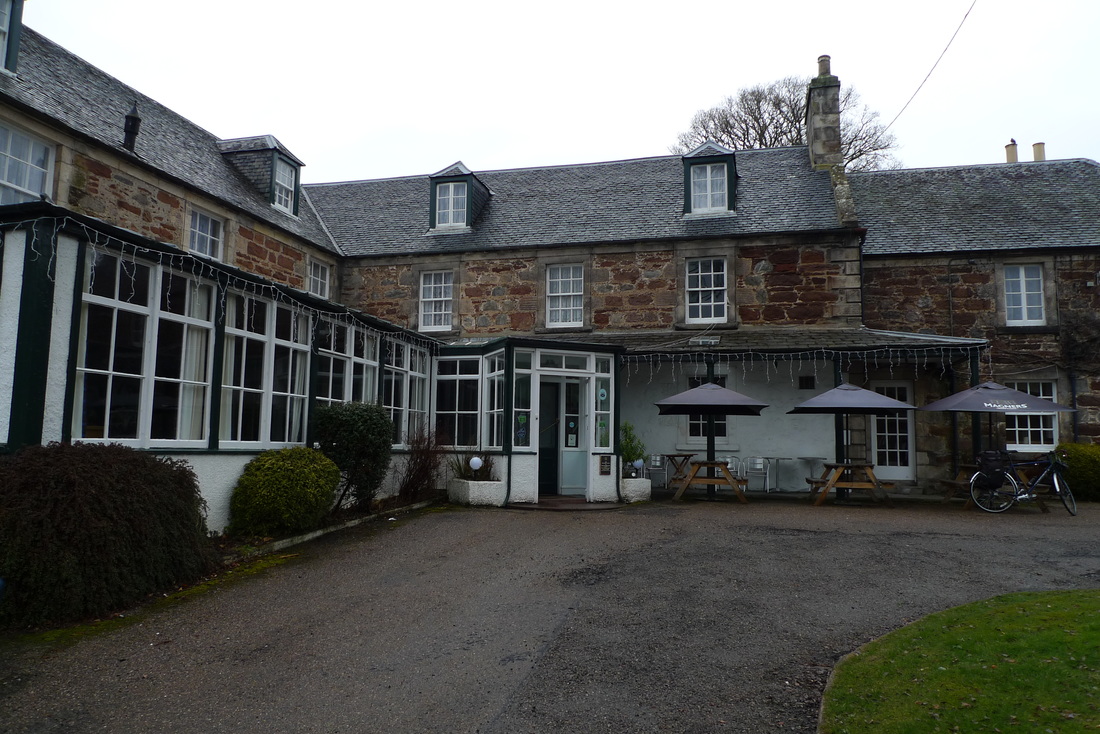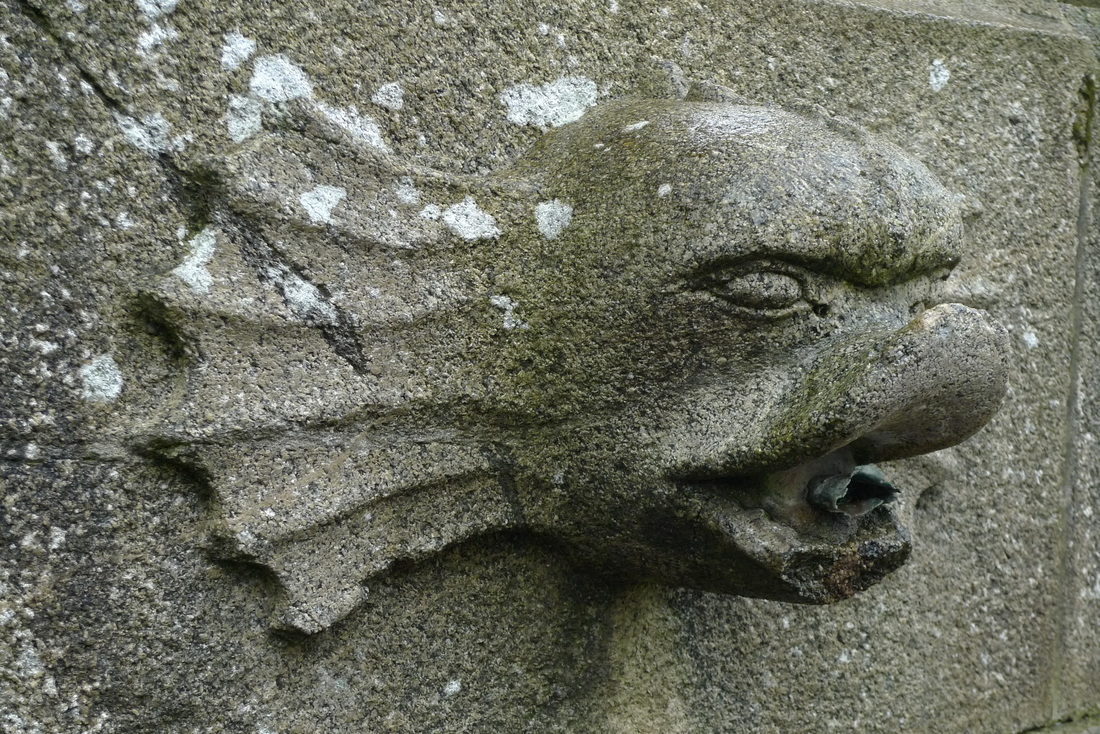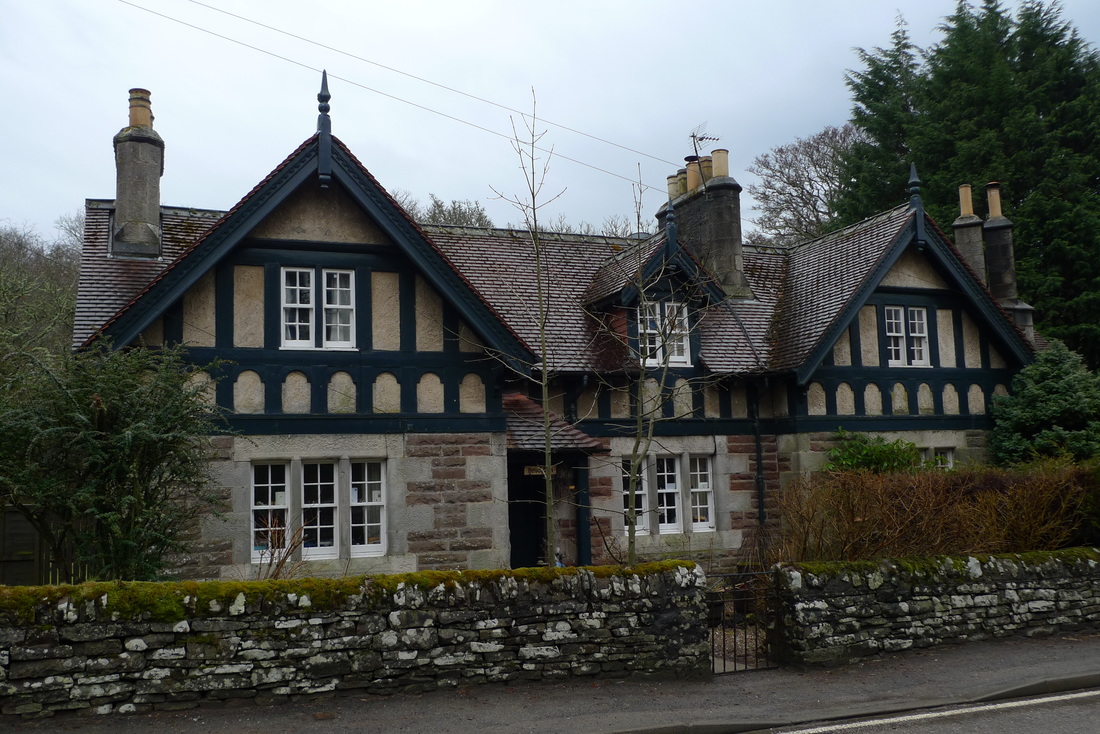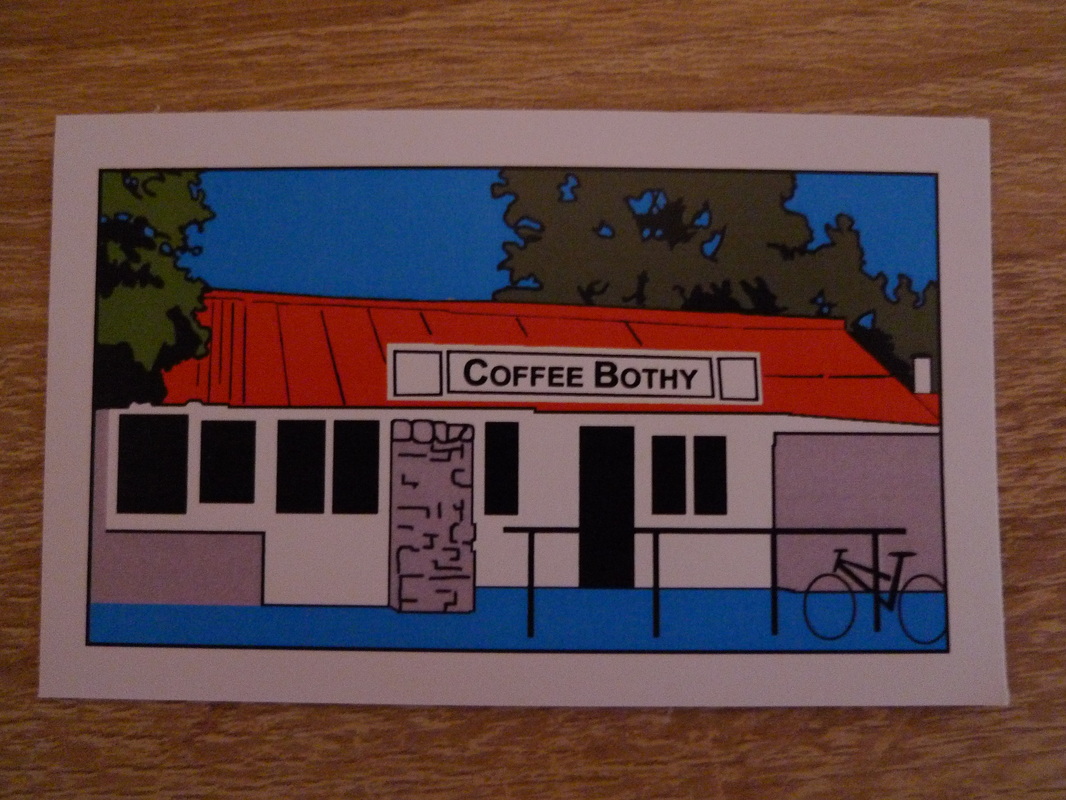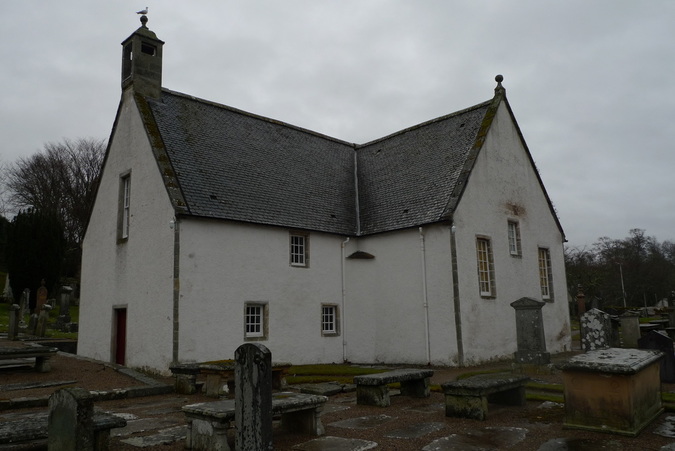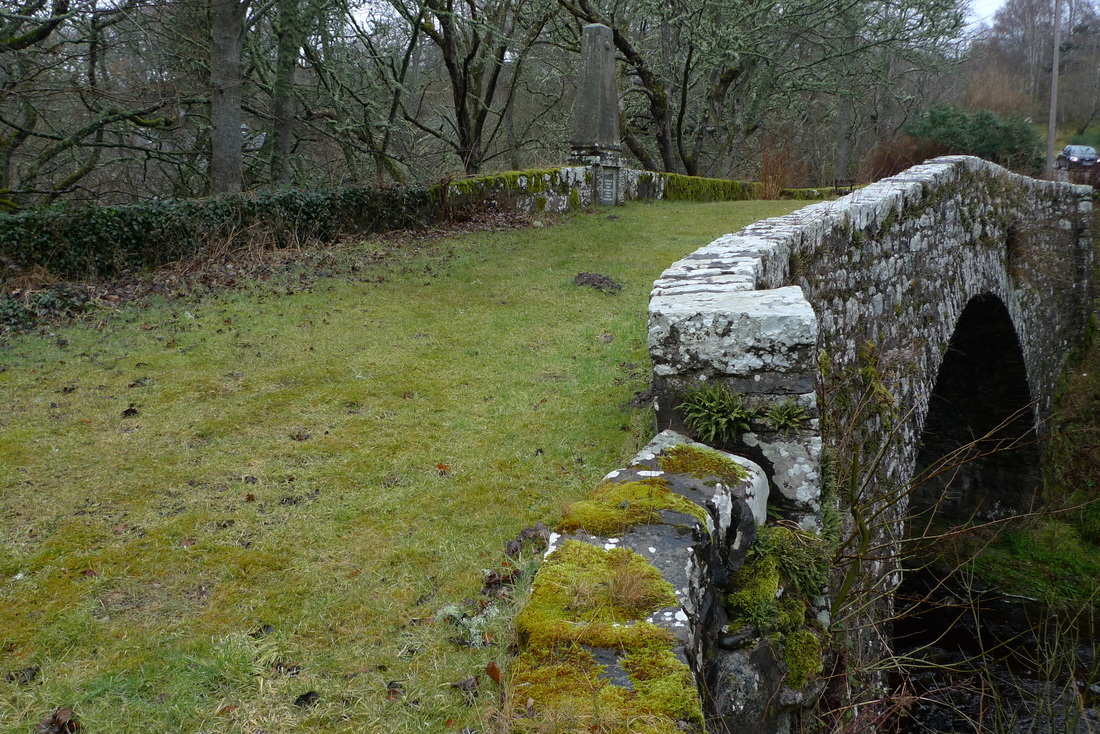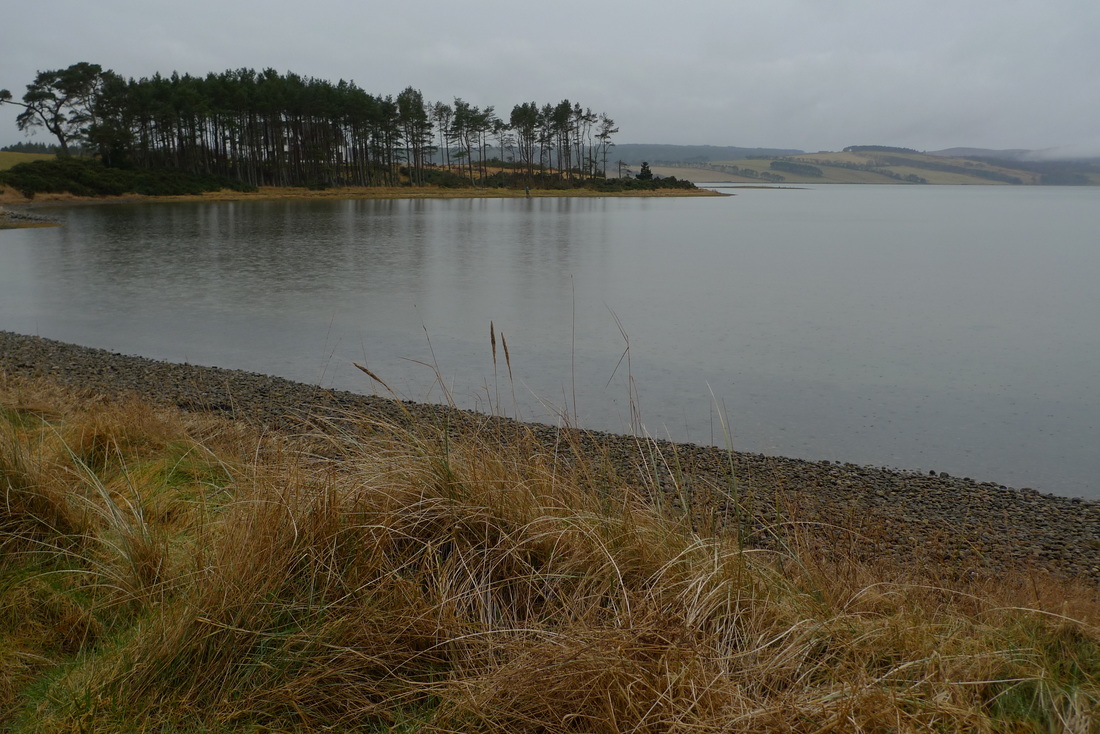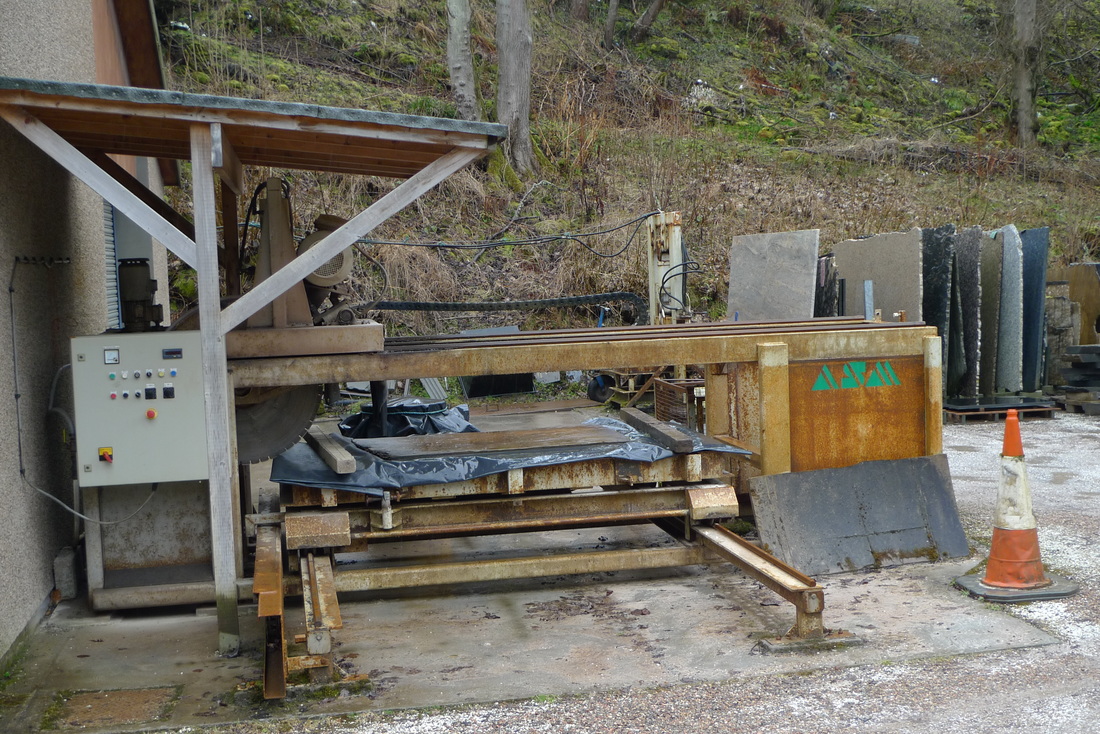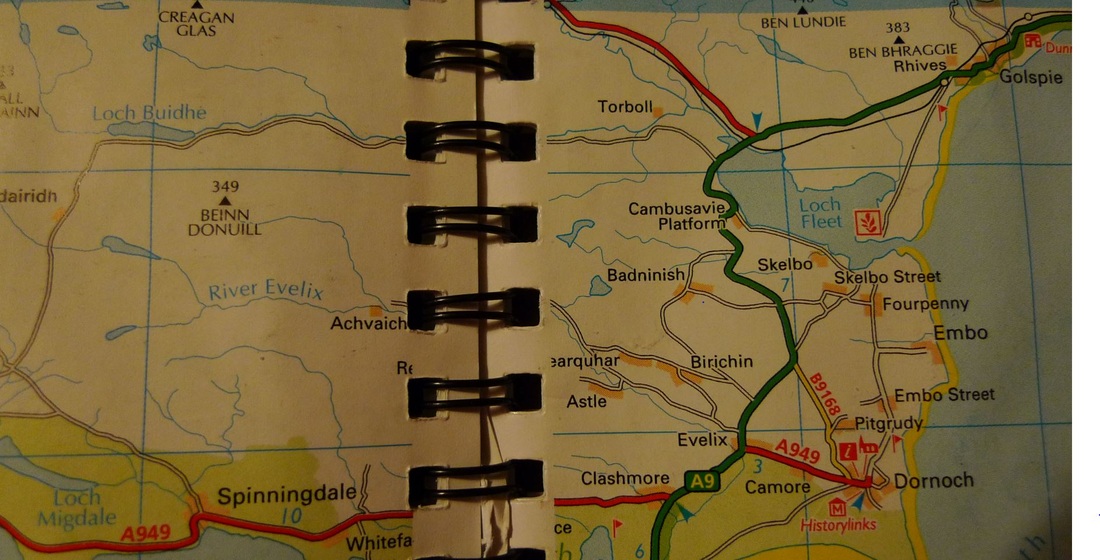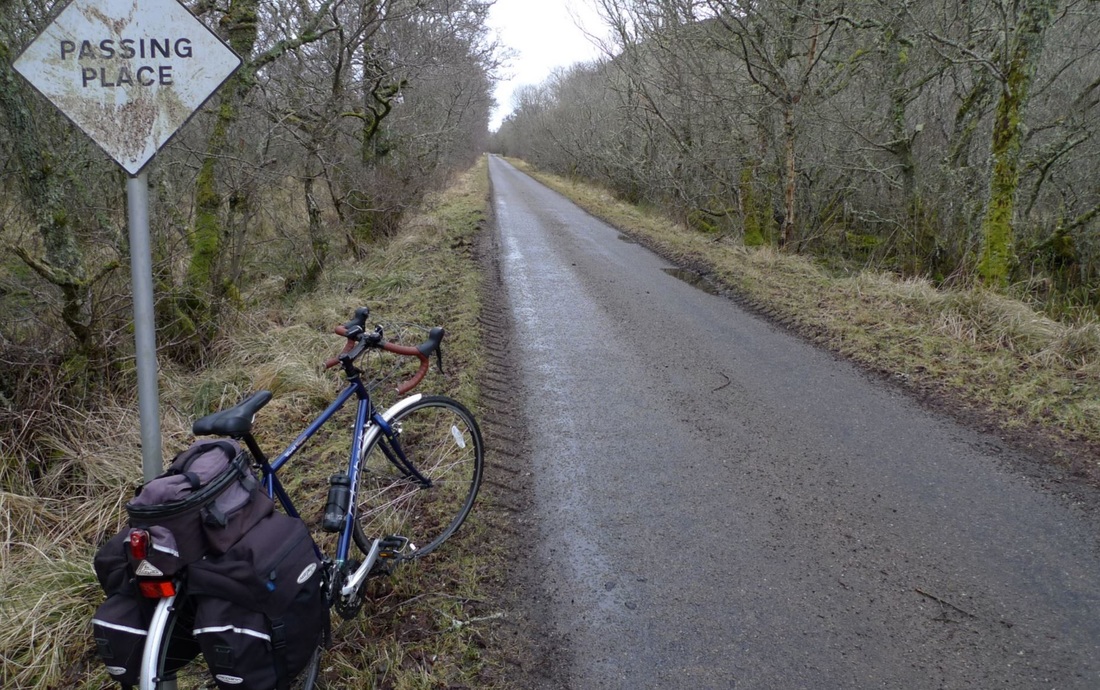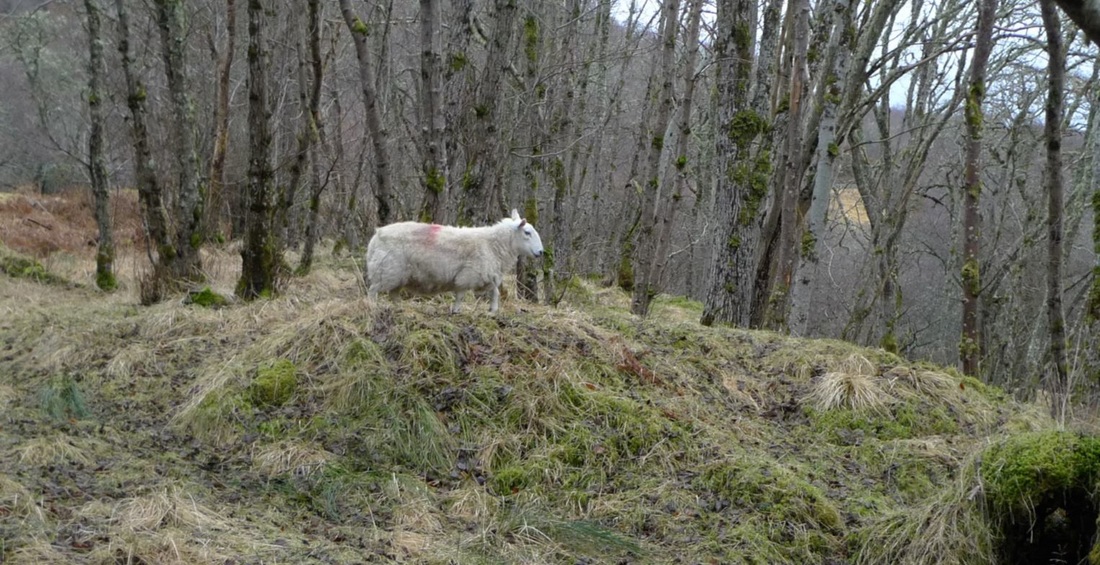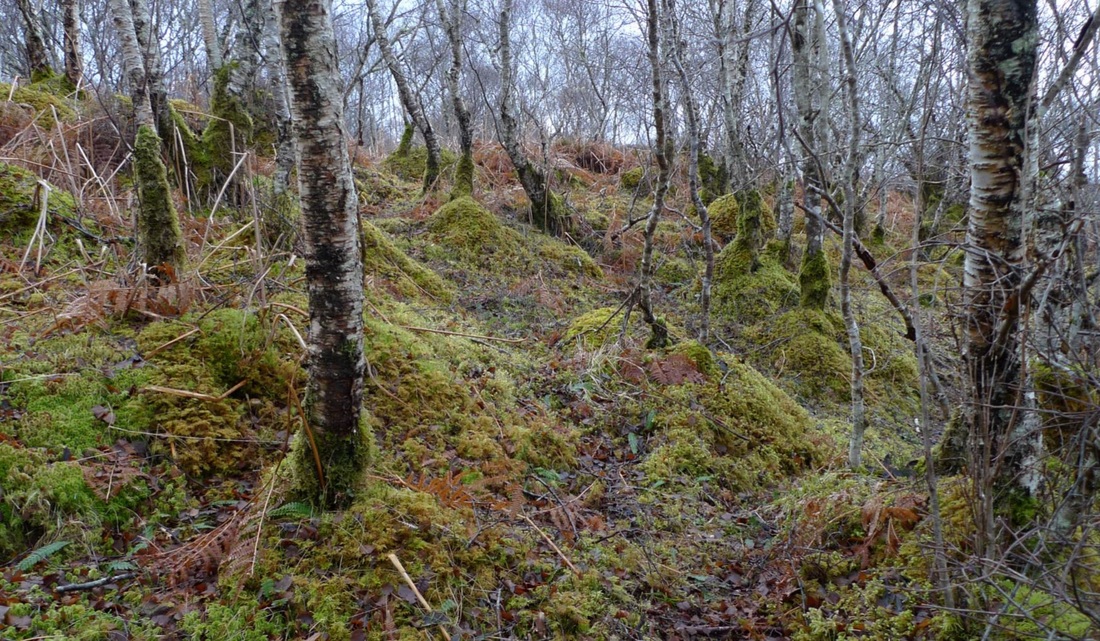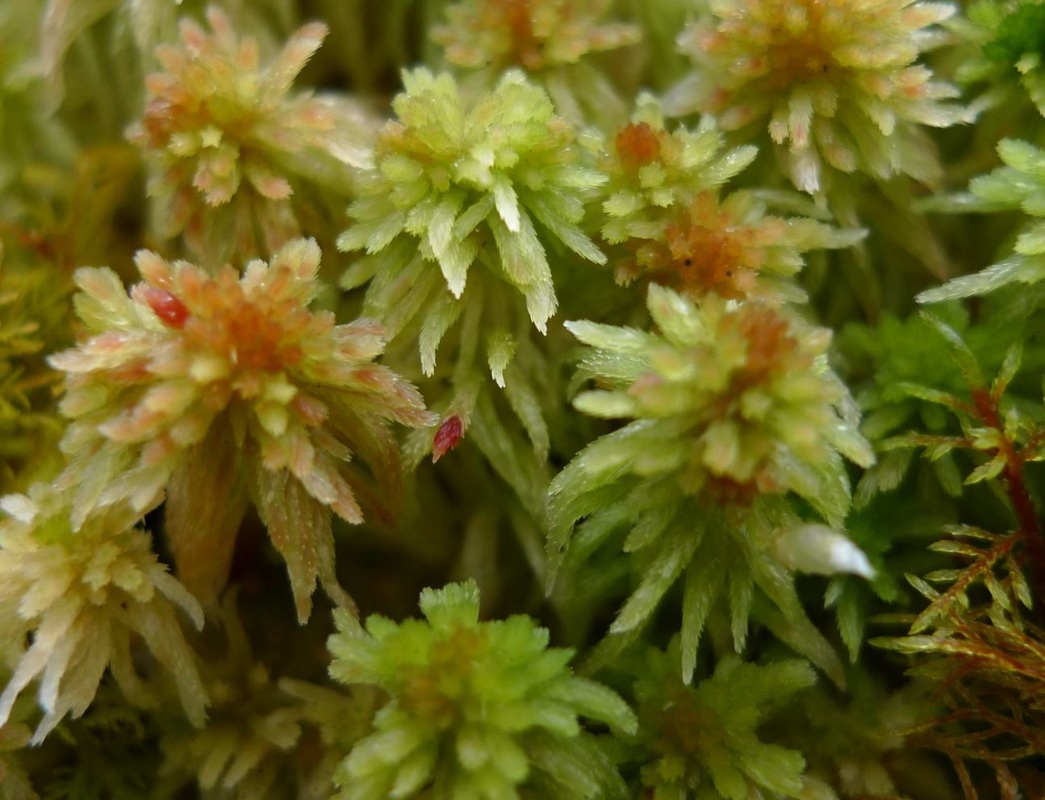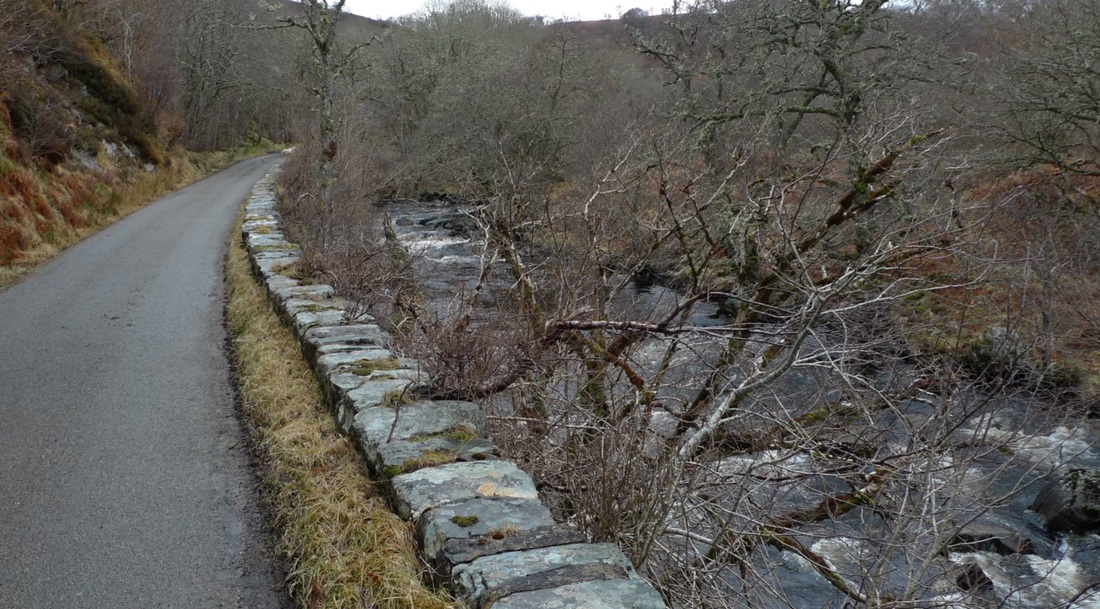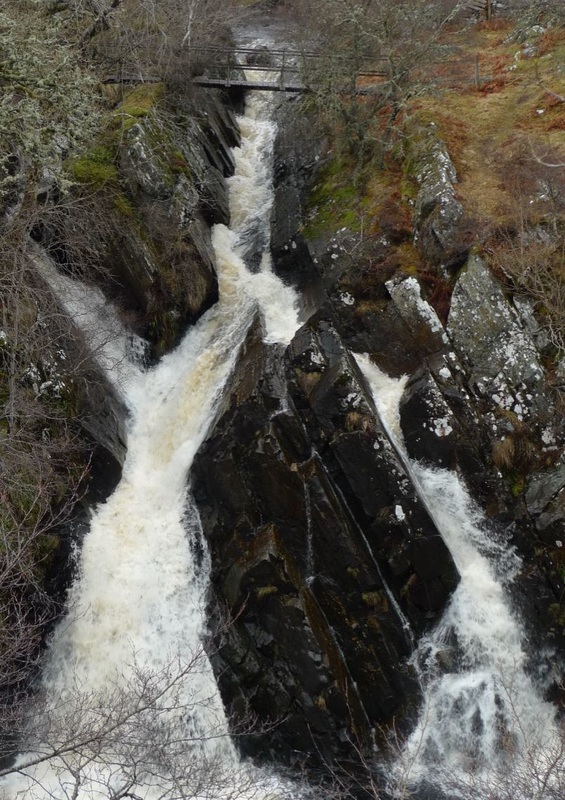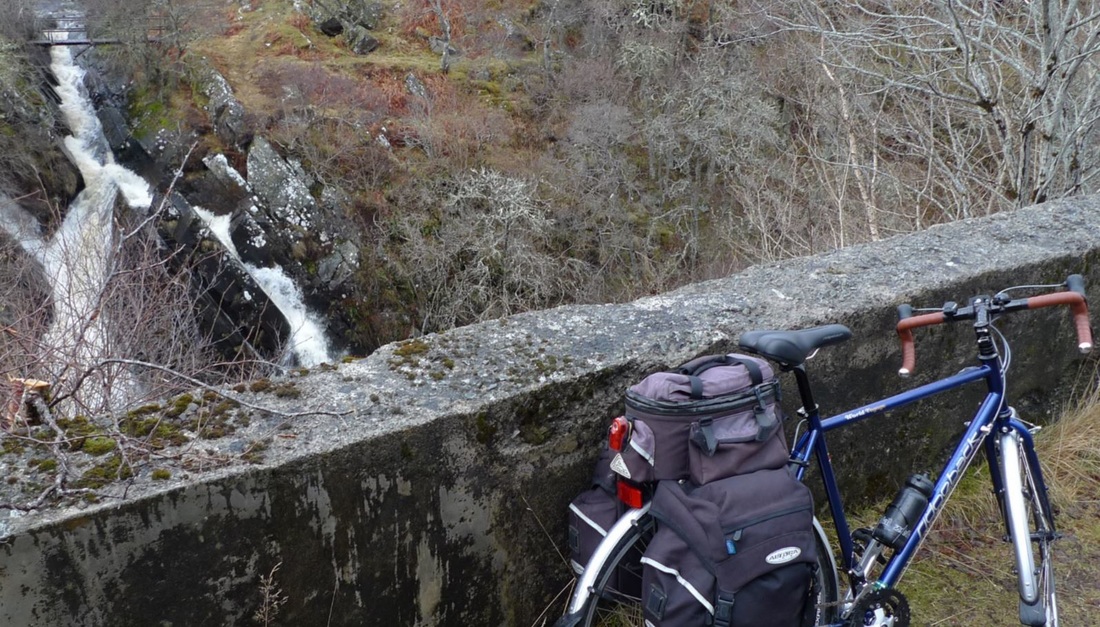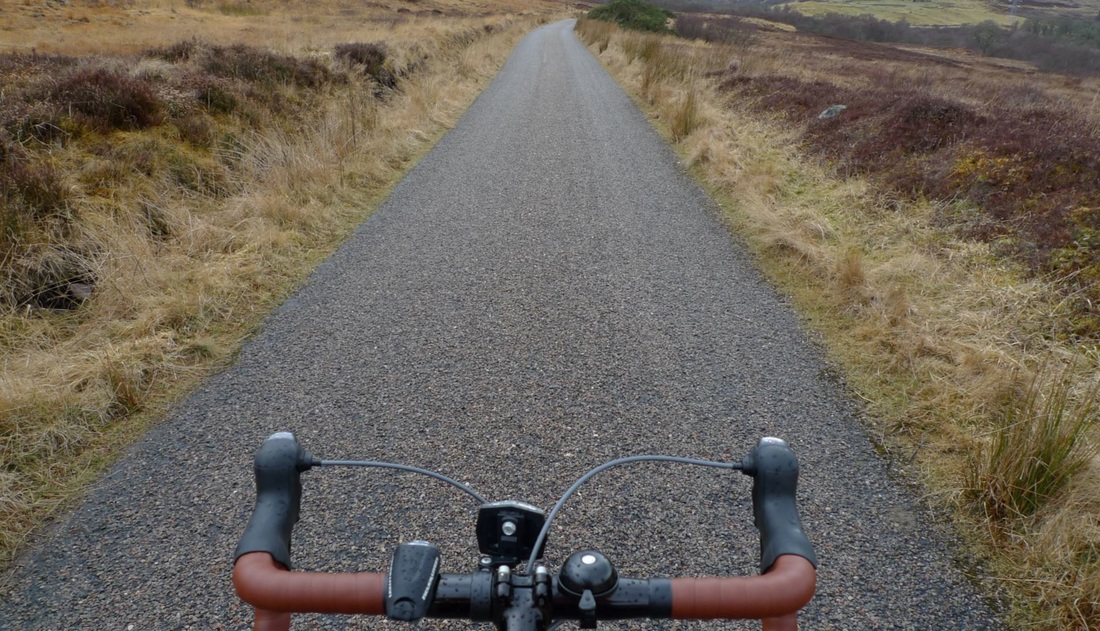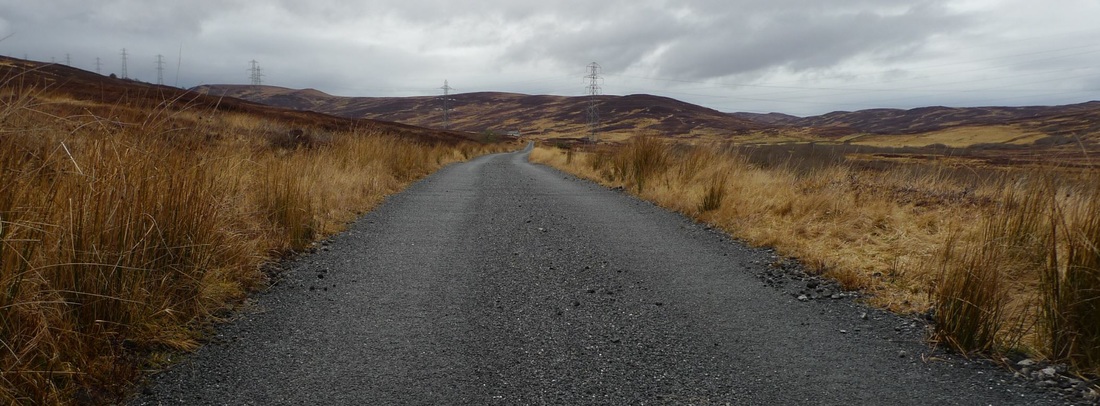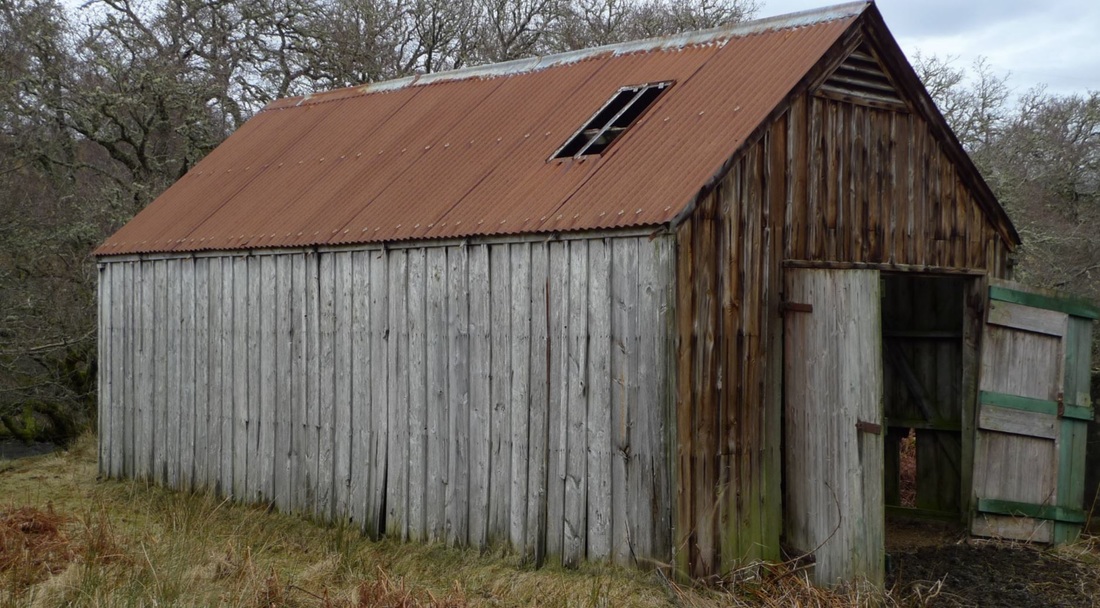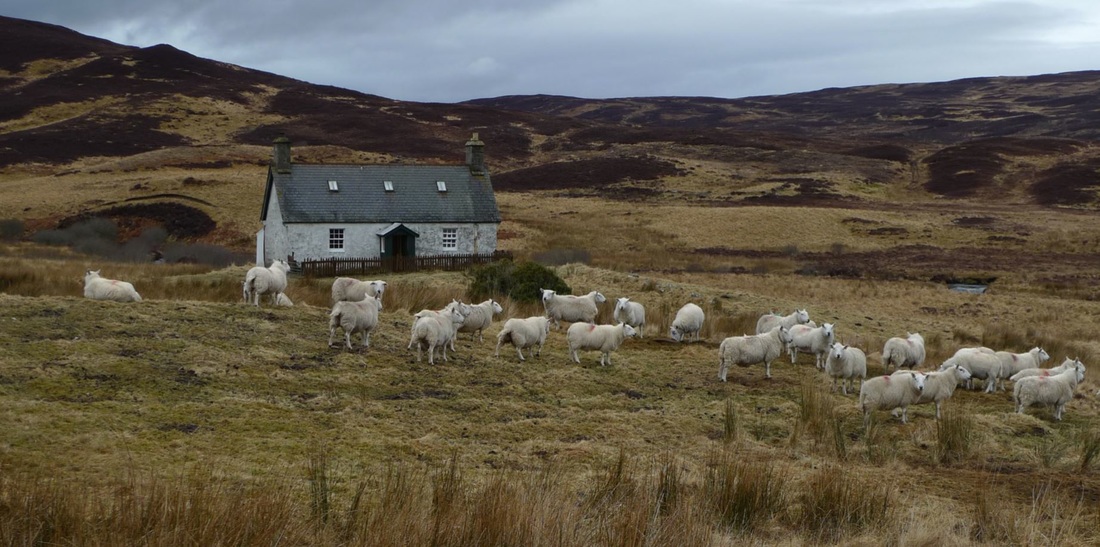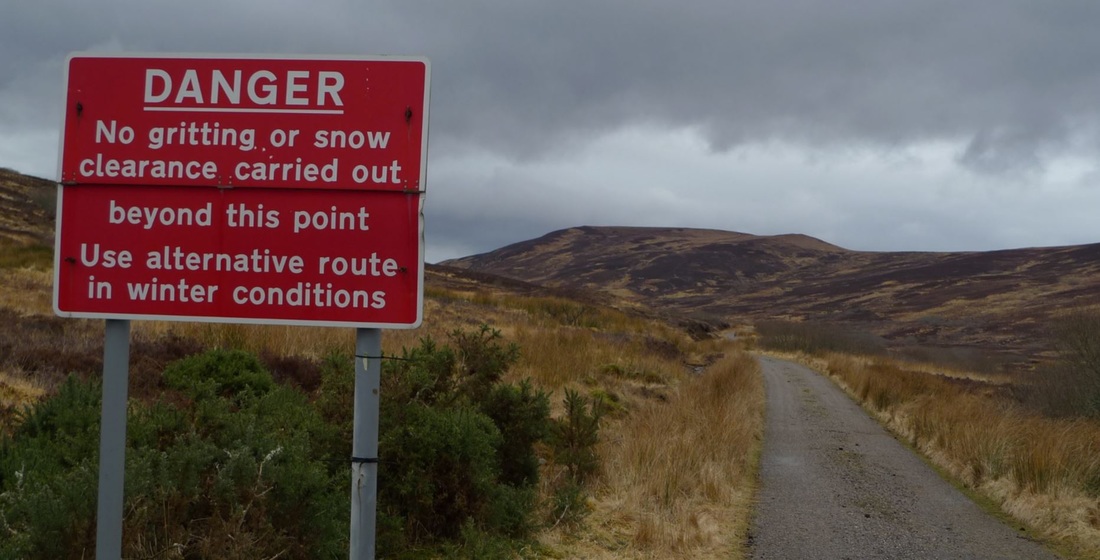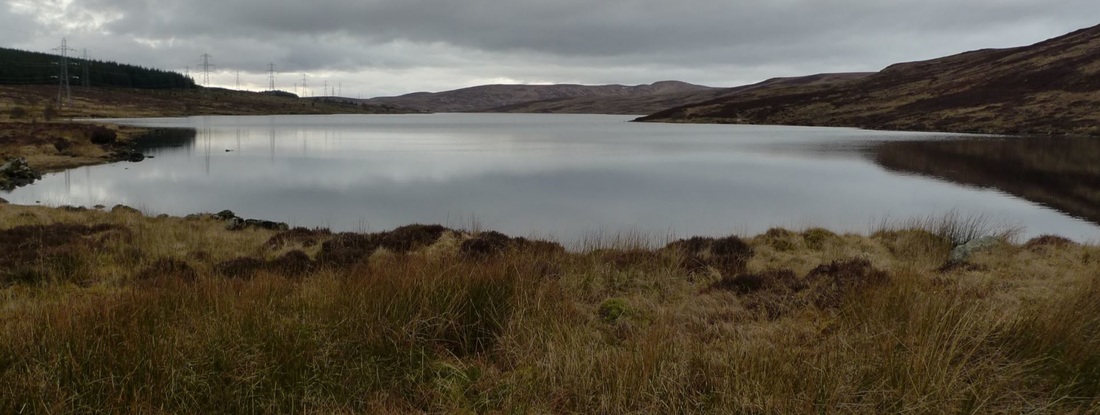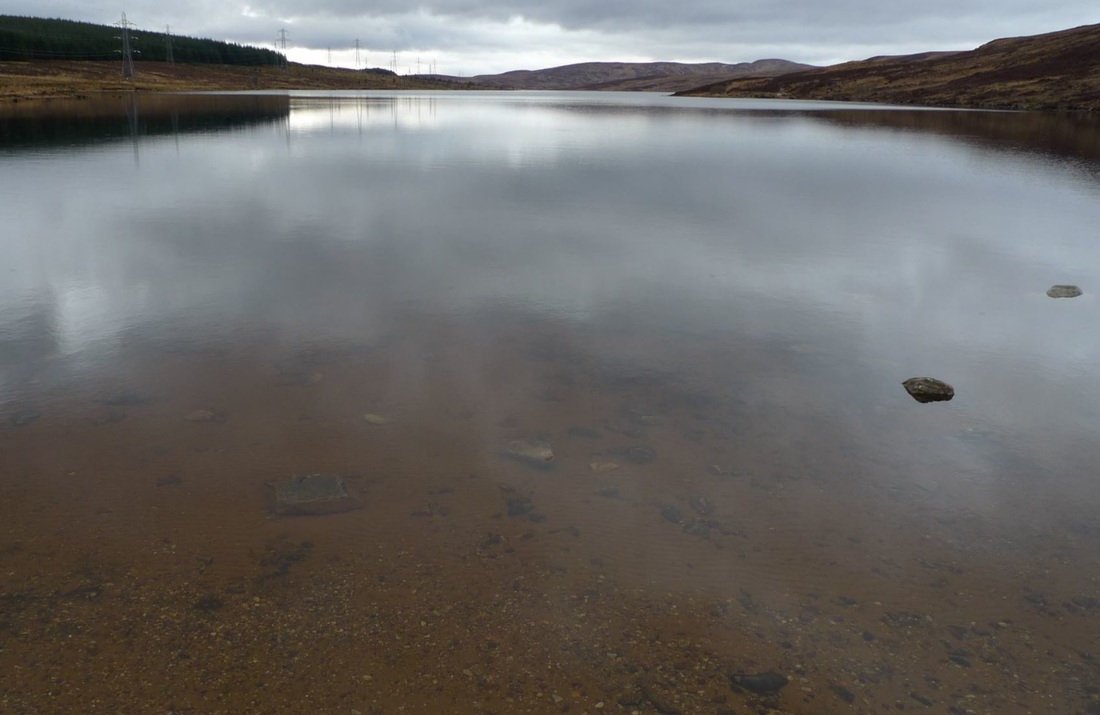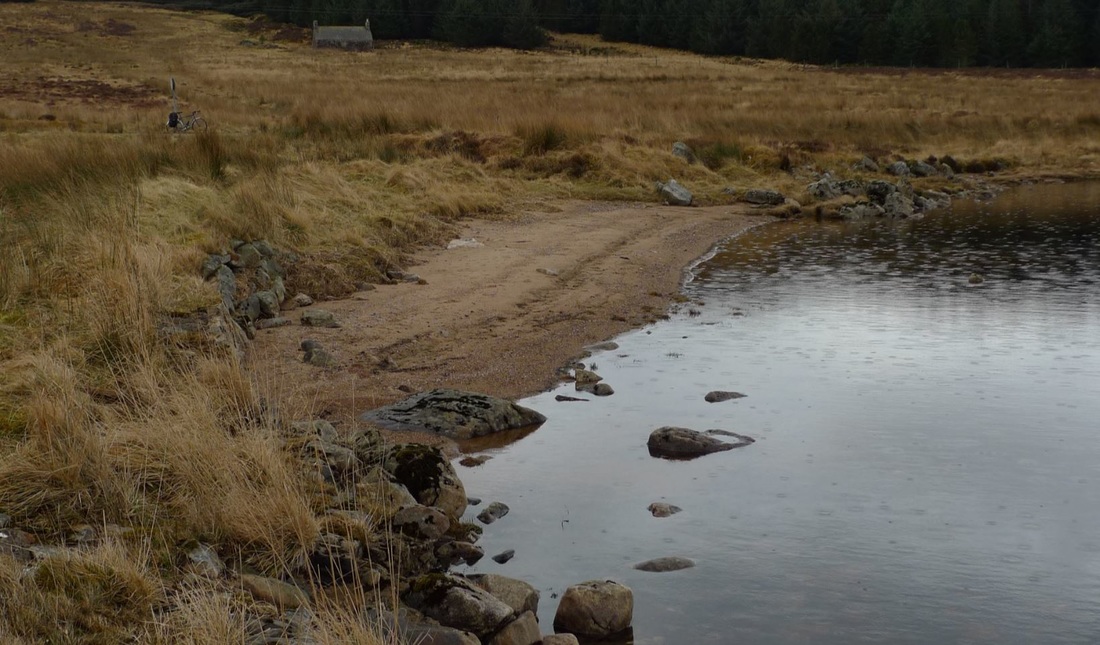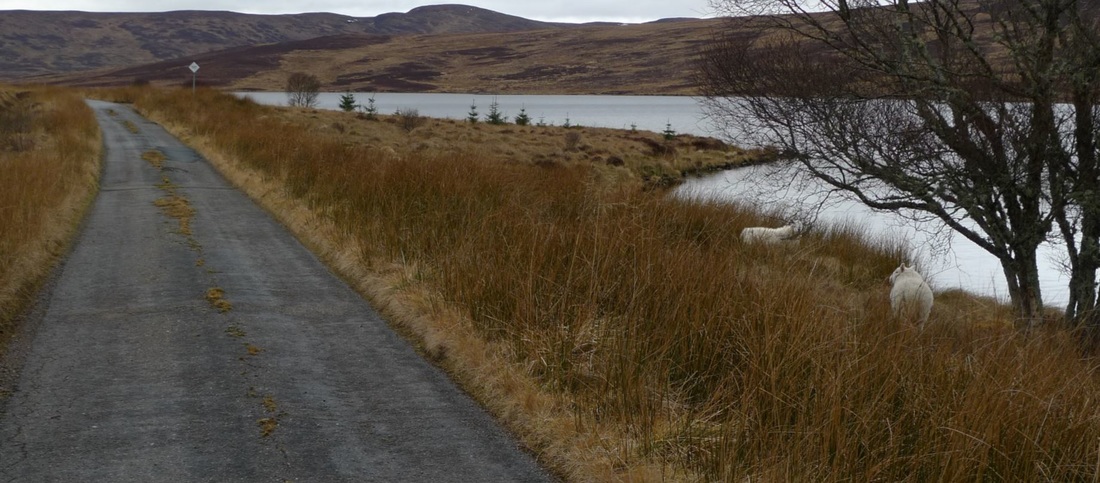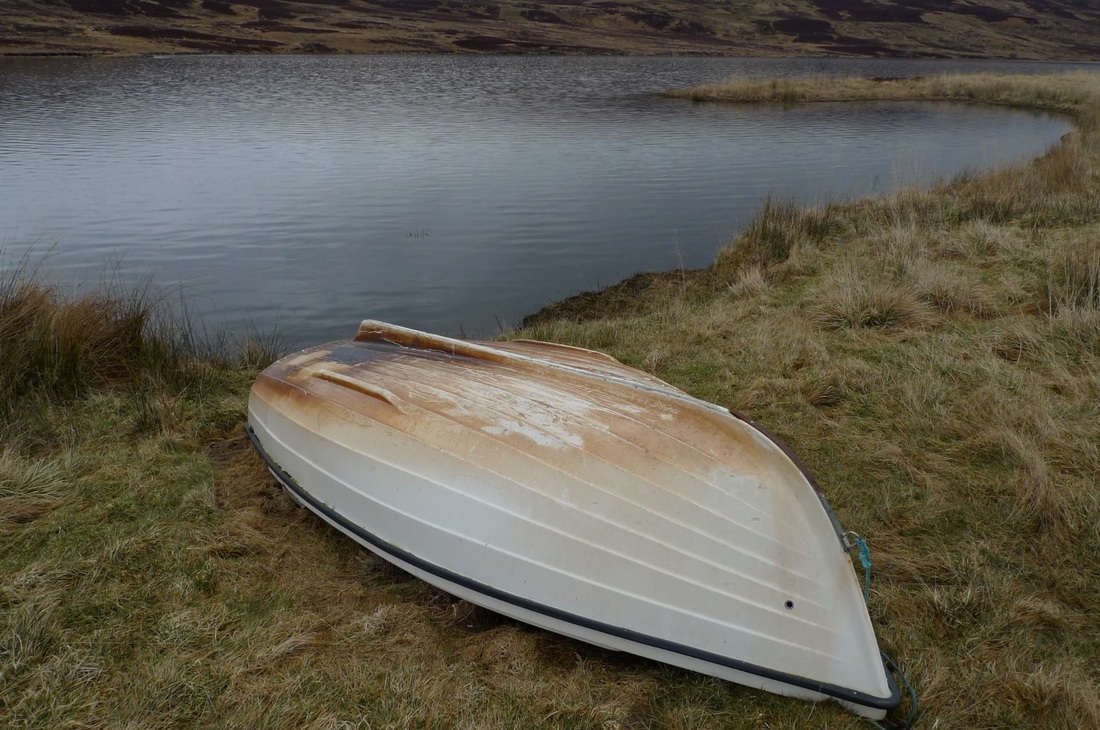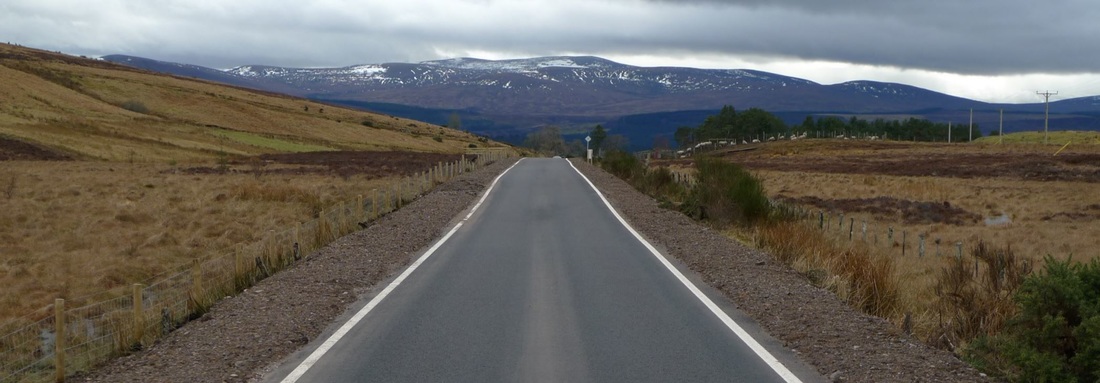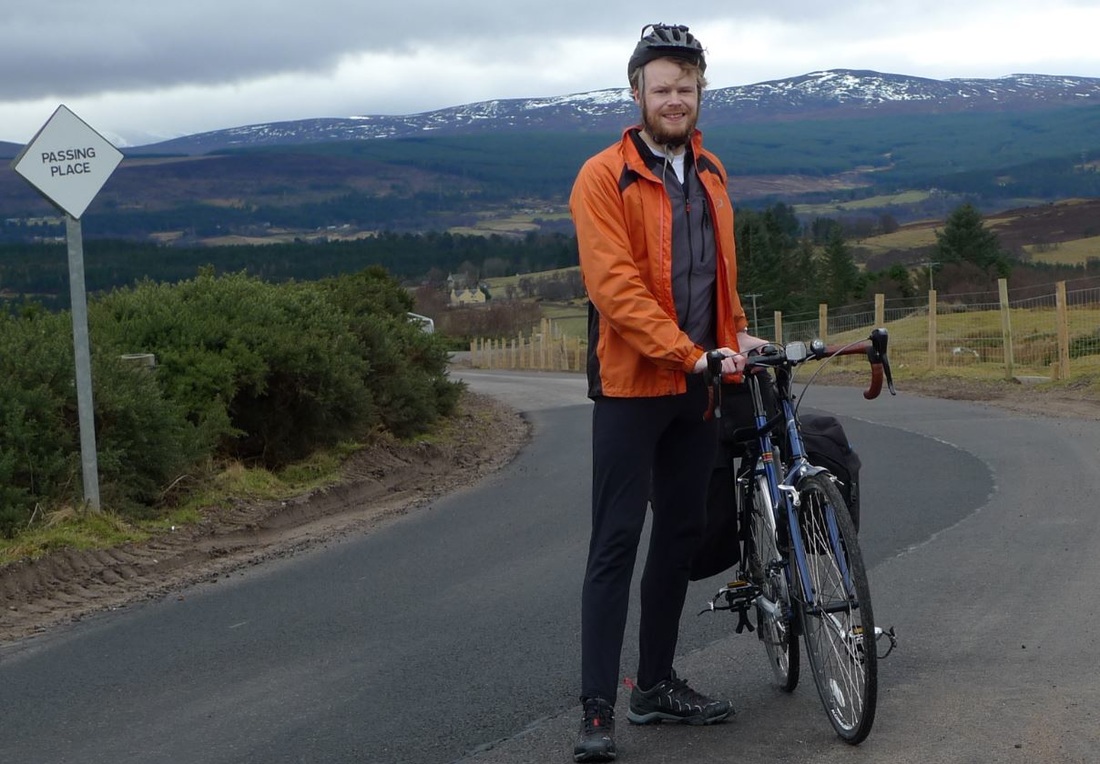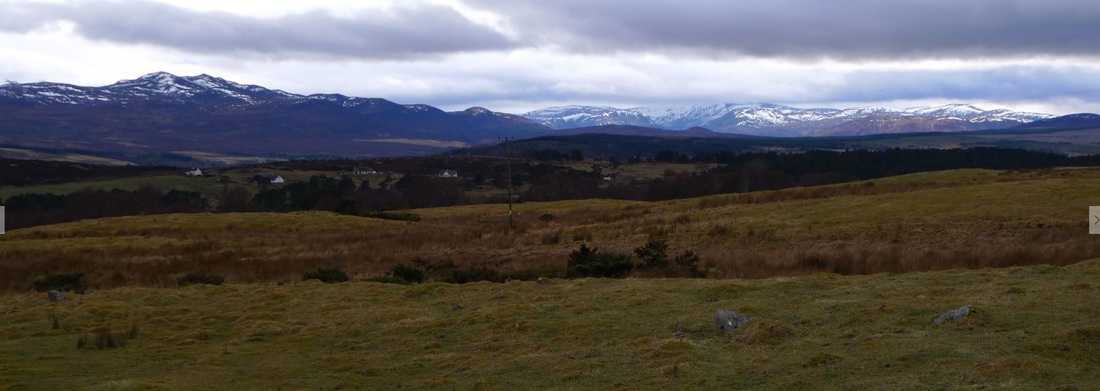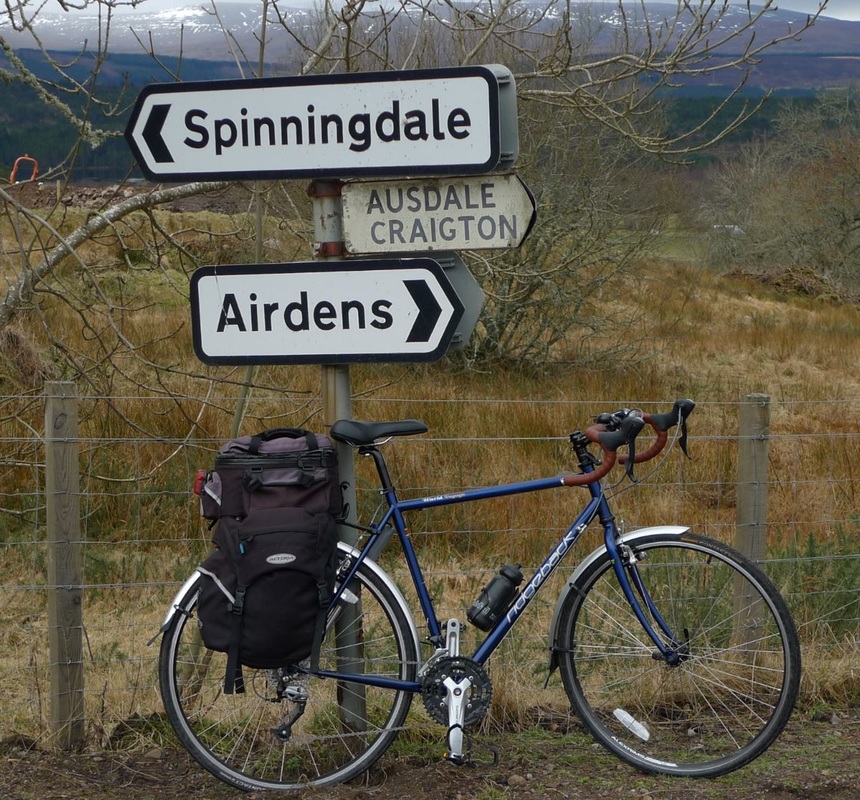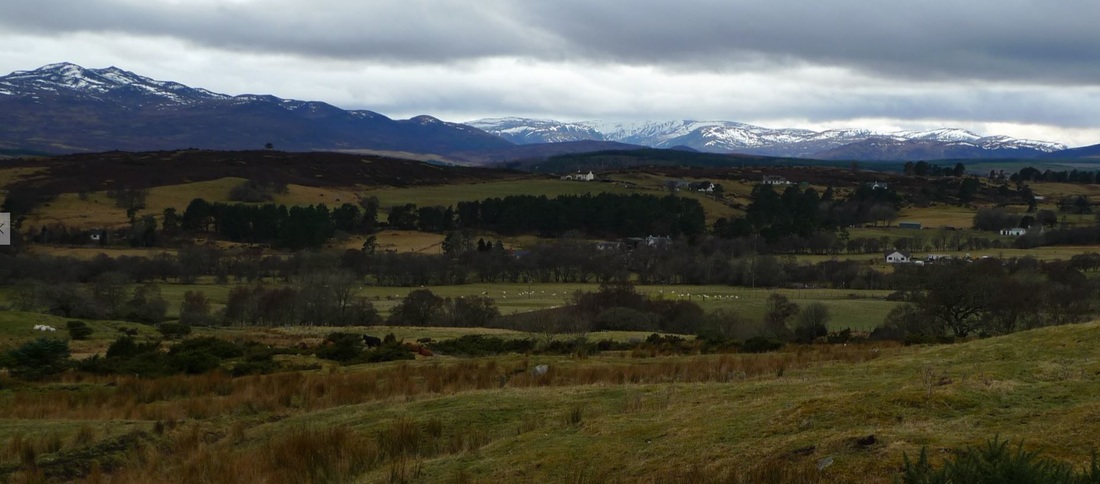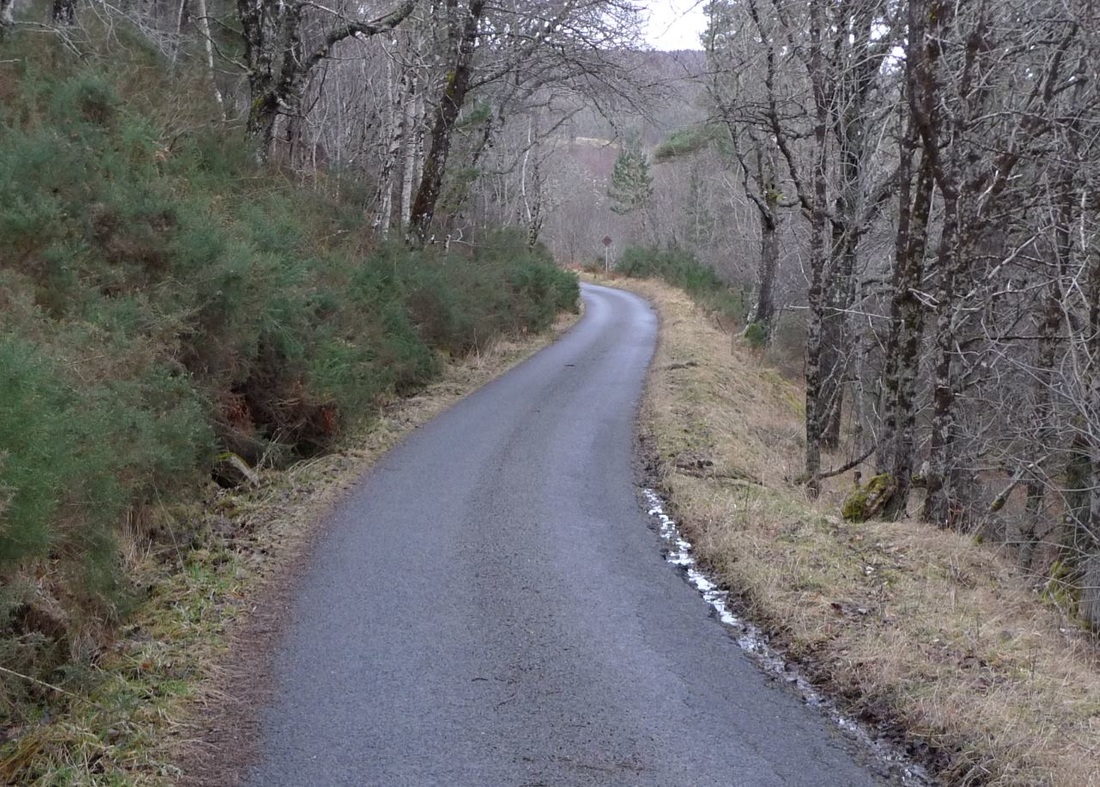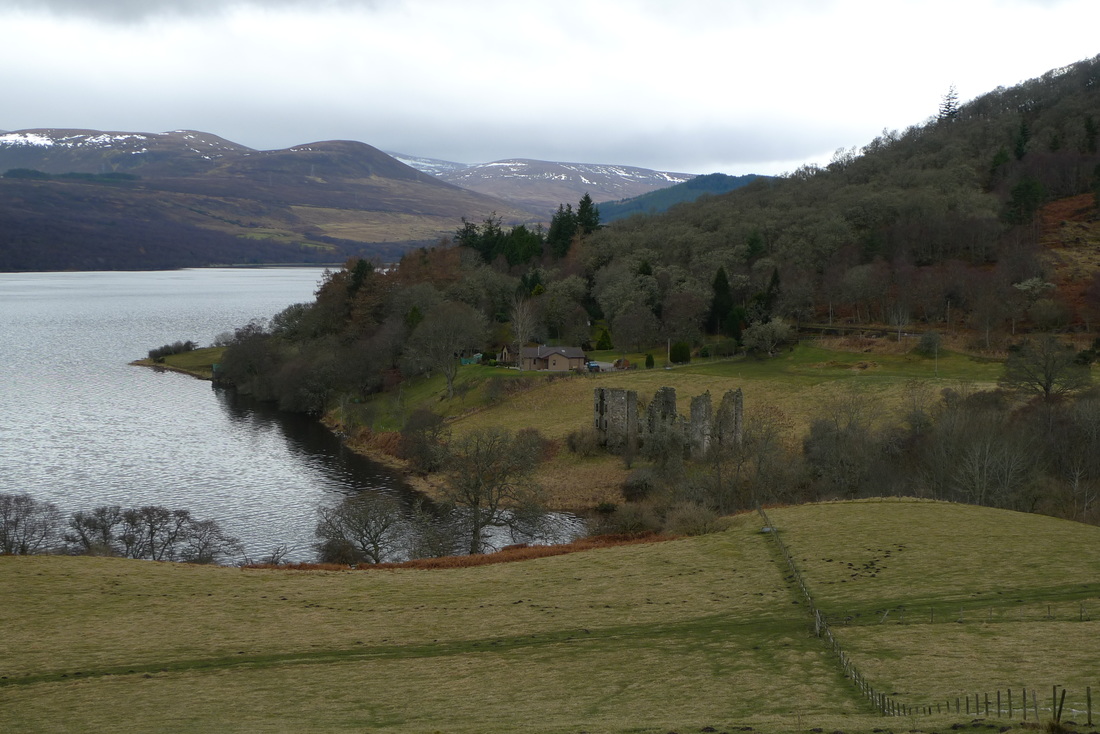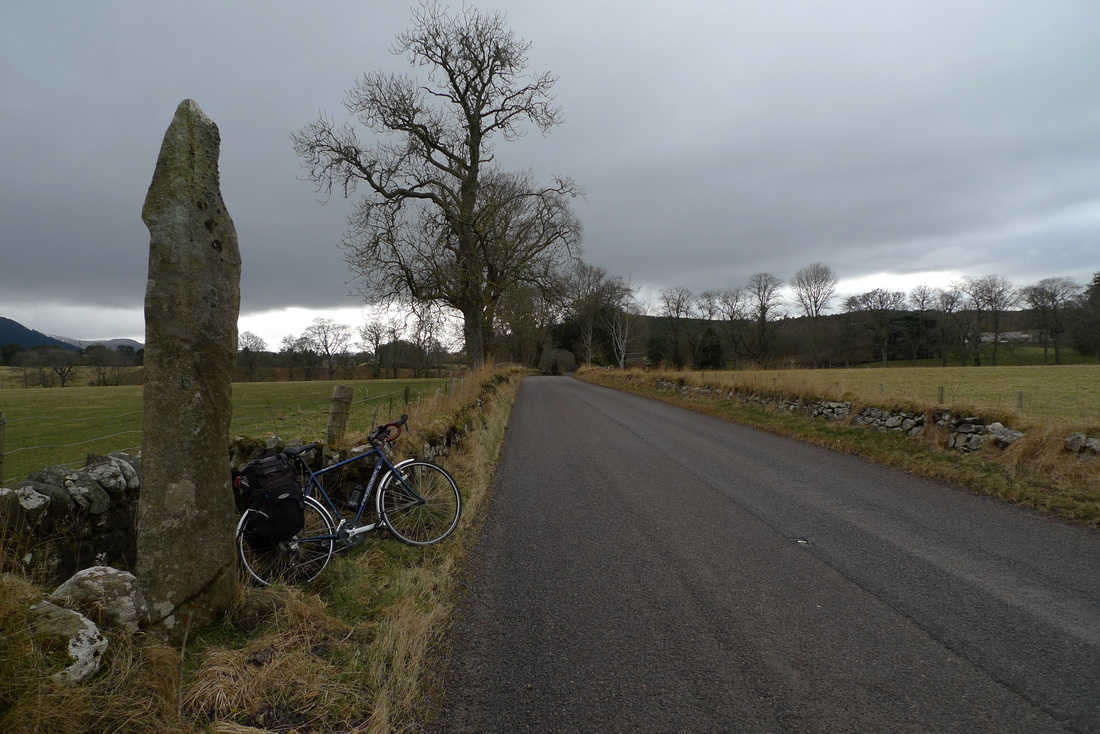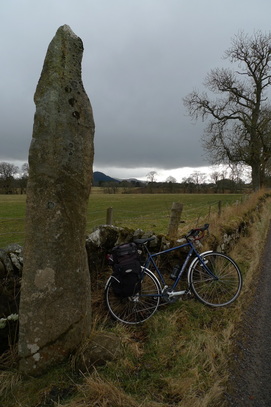|
This incredible sculpture stands on a remote hilltop in Sutherland, 100 miles north of Inverness. The journey to get here is well worth the experience of standing next to this 8 foot giant.
Near the village of Bettyhill you will find Borgie Forest. Here there is an uphill path to the sculpture. It takes your breath away because it is such an unlikely sight in a remote forest. The long legs, the sturdy rib cage and the big feet will enthrall you. You will want to stand next to it and walk around it.
Take a look at the head and what the giant is looking at. Is it just checking out the view or perhaps looking towards its home, the place it once lived?
The Unknown is representative of the outcast figure that features so prominently in Scotland's history, people like William Wallace, Bonnie Prince Charlie and the families of the Highland Clearances.
The sculptor is Kenny Hunter who is renowned for many well-known works across Scotland and elsewhere. The firefighter figure outside Glasgow Central Station is one of his, as is the goat standing atop packing crates in Spitalfields, London. The Unknown is undoubtedly the most remote of his works, appropriate for these outcast figures who were typically banished to distant lands.
You can read more about my experience of visiting this sculpture, including a map and details about cycling there in my travel feature about the area.
0 Comments
Helmsdale, 68 miles north of Inverness, makes a good starting point for cycling journeys through the remote Strath of Kildonan. It is a pretty village, located next to a river and the sea, with hills of Gorse that turn bright yellow in the spring. A bronze statue commemorating the Highland Clearances, a coastal walk and fascinating museum with superb cafe are among the things to see and do in the village.
1. The Emigrants Statue
Look at the faces on this sculpture. They tell a story, they capture the emotion of people forced to leave their homes and make a new life overseas. The Highland Clearances resulted in the forced eviction of thousands of people from the land to make space for more profitable sheep farming.
The 10 foot tall, bronze statue, features a father heading towards the sea. He has a determined look on his face, knowing he has to go. His son looks up at him, looking frightened. The mother is facing the opposite direction, towards the hills, symbolically where there home was. She has a baby wrapped in her shawl. I imagine she is hesitant and wondering if leaving is the right thing to do for her child. 2. Cross the Thomas Telford bridge
Thomas Telford, the famous Scottish engineer, built the bridge that crosses the River Helmsdale into the village. The A9 road used to run this way until a modern crossing was built in 1970, which also resulted in the destruction of the ruins of Helmsdale Castle. On a positive note this does mean that the Telford bridge offers a tranquil entry into the village. If you arrive by train you will walk or cycle into the village by crossing this bridge. You don't need to worry about traffic here and can enjoy the view in peace.
3. Listen to the Clock Tower
The clock tower has a gentler version of the Big Ben chimes. Helmsdale is so peaceful that the chimes can be the only sound of human existence, particulary in the evening. The clock faces are lit at night, creating a magical atmosphere with the backdrop of dark, brooding hills.
The tower sits on a hillside that gives superb views over the village. It was built in 1924 to serve as both a landmark for the fishing boats and as a war memorial. It is quite moving to think that the war dead are honoured each time that the chimes are sounded. In this short video I love that you can hear sheep and birds between the chimes, evocative of the peacefulness of Helmsdale.
4. Sit in the First Class Waiting Room
The 1871 train station was restored in 2013 after being boarded up for many years. You can go inside the original first class waiting room where there is a fireplace, antique railway desk and information about the station. There is even a self-serve book exchange. You can stay in the station as the rest of the building is self-catering accommodation. If there is nobody home you might be able to peek through the window and see the comfortable living room with wood burning stove.
5. Coastal walk to Navidale
This is one of those walks where you want to keep going and see what is around the next headland. Behind you is a hill that is a chorus of songbirds. In front of you is the sea and the occasional squeal of an oystercatcher. During my visit the sea was incredibly still, with barely a ripple. The pebbles on the beach have enormous variety of colours and patterns. I exchanged greetings with a local man carrying driftwood, perhaps to decorate his cottage with. The walk begins to the east of the harbour and if you go all the way to Navidale the distances is about 1.5 miles.
6. Timespan
This museum explores the the history of Helmsdale with displays and objects, including a recreated croft house, shop and blacksmith's forge. There is a strong focus on the Highland Clearances. In 1791 Kildonan Parish was home to 1365 people and 5040 sheep, by 1840 there were 18,000 sheep and only 257 people living there. For me the most poignant object in the museum is a broken bowl, found on the cobbled floor of a collapsed longhouse in 2013. The fact that the shards of the bowl had not been cleared away is indicative that it could have been broken during the upheaval of the family's removal from their home.
7. The River Cafe at Timespan
The cafe's windows look onto the gardens, the River Helmsdale and the Thomas Telford bridge. There is no trendy shabby chic decor in here. The focus is on the food. A card explains that everything is sourced locally, such as crab and salmon from a Helmsdale fisherman. The herbs come from the garden. During my visit the blackboard at the entrance stated the soup of the day was "viking turnip", so I gave it a try. I never knew you could make a turnip taste this delicious until I had this heavenly soup.
8. Walk to Saint John's Well
It is only a short walk, 200m, along the river bank to this well. It is a pleasant path through the trees. The well is dedicated to St John the Baptist and inside it there is a curious collection of pebbles with painted faces.
9. Go Back to the 1970s at La Mirage Restaurant
The interior of this restaurant is deliberately kept in 1970s style in honour of the original owner, Nancy Sinclair, who was a good friend of Dame Barbara Cartland. Cartland, famous for her flamboyant style, was a romantic novelist who wrote about 700 books and took holidays in Helmsdale.
This is essentially a fish and chip shop, but a very good one that has received many accolades and worldwide recognition. I ordered the 'special fish tea' and my jaw dropped at the appearance of two pieces of fish, peas, a separate bowl of chips, bread and butter and a pot of tea. It was delicious, but there was no way I could finish it. 10. The Harbour
Helmsdale was a product of the Highland Clearances. It was created to provide alternative employment, mainly fishing, for people evicted from the land. The harbour still has a fishing fleet, but nothing like the heydays of 1816-1821 when the herring fleet grew from 20 boats to 200. It is hard now to imagine the street lined with the hustle and bustle of cooperages and fish gutting yards. This is now a pleasant place for a stroll, looking at the boats, the lobster pots and row of colourful houses on Shore Street.
I was asked to write a blog for Venture North, the group that promotes tourism in Caithness and Sutherland. This was published on their website in May as part of a collection of blogs from people who are passionate about the area. There is a focus on the undiscovered, the hidden gems of the area, so I decided to write my piece about the joy of railway request stops. There are eight request stops in Caithness and Sutherland. These tiny stations are in remote areas and provide access to superb cycling. It is also somewhat of an adventure using railway request stops- you have to hold out your hand to stop the train. I find them fascinating and I love the solitude and spectacular scenery that they guarantee. Read my piece to find out more. The other blog posts are excellent reads, revealing a great love of Caithness and Sutherland. If you have not yet been to this part of Scotland they are sure to inspire and if you have been before they will give you new ideas of places to visit.
One of the pieces was written by Edwyn Collins, the musician, and one by Lisa Weller, an artist who works from a cottage on the cliffs of Wick. See them all by heading over to Venture North. This adorable building with the tall monkey puzzle in the driveway is the place to stay in Golspie for delicious food and a relaxed and friendly atmosphere. The Golspie Inn is one of the prettiest buildings in the village. It is over 200 years old and has some quirky features. It was the first bar in Sutherland and Scotland's oldest post box is in the wall of the inn. Original features like sash and case windows and cast iron radiators add to the character of the rooms. My room was simple and comfortable. I was a bit concerned about my window overlooking the A9 road, but I need not have worried as the road is virtually silent at night and I had a perfect sleep.
At breakfast there was perfect poached eggs on toast. The couple from Spain, sitting at the next table, were craving some croissants and the manager, Tricia, produced a freshly baked batch especially for them. I heard the woman say that they were the best she had ever tasted. Tricia offered me one and explained that she also runs the cafe/bakery, Poppy's, on the Main Street and the croissants came from there. It was a delicious croissant, as good as any I have had in France. It is quite unusual to be able to have one for breakfast in a Highland hotel, but this was the kind of personal touch that Tricia likes to provides for her guests. Tricia told me about what there is to see and do in the area- she has great passion and knowledge. The hotel offers a variety of sightseeing tours, including visits to whisky distilleries and Tricia knows about the hidden gems of Sutherland. She mentioned beautiful waterfalls that few other people know about. I was glad that she recommended The Big Burn Walk, which is right next to the hotel. It became my favourite walk in Scotland and I wrote a blog about this. I loved the collection of old photographs of the hotel in the lounge area, particularly this one of the front of the hotel which shows that little has changed, apart from the old car. I think that it is important that the history of a hotel is shared with guests as it makes it more special and authentic to the area to stay there. With modern hotels you have none of that and even some older hotels fail to tell guests their story, so it is good to see that Golspie Inn makes the history of the place a central part of the guest experience.
I really enjoyed the conversation over breakfast. I chatted to the Spanish couple about travel plans and even a bit of current affairs. Tricia joined in and provided us with lots of tips about things to see and do in the area. It is that kind of relaxed and friendly atmosphere that makes a hotel stay enjoyable and memorable. A double room with breakfast is around £90 and you can book online on the Golspie Inn website. For cycling in the area try the quiet road between Golspie and Dornoch Read more about Golspie: 10 Things to See and Do in Golspie
This blew me away. I loved every minute of it. Sometimes I get off my bike to go for a walk and the Big Burn is the most spectacular walk that I have done on a cycling trip.
The walk begins in a forest with no hint of how spectacular it will become. In fact, it is a somewhat ordinary introduction. The name of the walk gives nothing away- a burn does not sound impressive- but the picture on the stone sign suggests something more special: The path crosses a humpback bridge, with the same name as me! 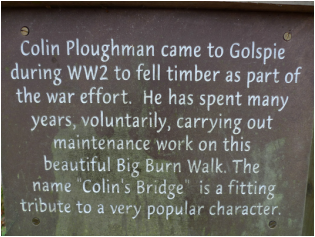
A plaque on the bridge explains why it is called Colin's Bridge. It pays tribute to a local man who voluntarily carried out repair works to the paths.
The walk proceeds under the huge railway arch and alongside the burn. Its banks are thick with trees and foliage. So far, quite a nice walk, but not necessarily spectacular.
That was to change all of a sudden...
The path takes you into a gorge where the burn flows fast and noisily. Wooden bridges continually cross the gorge from one side to the other as you make your way further inside. It felt to me like an expedition into a lost world. I thought I was somewhere abroad, not Scotland. There was something about the rocky chasm, the soundscape of rushing water and the exotic-looking green foliage that transported me elsewhere.
This waterfall, in particular, made me think of rain-forests in Costa Rica. Those delicate tendrils of silvery water pattering over a rock garden of lush green moss seemed to me to be evocative of South America:
I should not have been thinking of elsewhere. This beauty was right here, in Scotland, and I was fortunate to be able to see it. Enjoy this short video that captures the lovely sound of this waterfall:
After seeing this I thought that I had seen the main attraction of this walk, but no. It continued further into the gorge, across more bridges.
I was so glad that there was more and the adventure could continue. I turned a corner and wham! A gushing, deafening, powerful waterfall was before me. The water was being forced through a narrow gap in the gorge and this was the reason for all this watery chaos.
I stayed awhile, enjoying the sound of the water and feeling the spray on my face. It was spectacular and this video captures some of the magic of this waterfall.
I loved how lush and green this walk is. Take a look at this stairway cutting through grasses.
It was a wet day during my visit, but it did not matter. It added to the feeling of being on an adventure and going somewhere wild. It made the foliage more lush. Look at this carpet of glistening leaves on the path:
Once I had seen the waterfall I retraced my steps to return to Golspie. On the way I took the path marked for the skating pond and found a peaceful spot that would be ideal for a summer picnic.
This walk is a must. If you are in the area please make the effort to do the walk as you will not regret it. The distance of the walk is about 2 miles, relatively short for something that turns out to be such an incredible adventure.
Looking for somewhere to stay in Golspie? The Golspie Inn is right next to this walk. Read my review of Golspie Inn For more things to see and do in Golspie take a look at Ten things to see and do in Golspie. Try cycling the quiet road between Golspie and Dornoch for amazing views of snowy mountains. Golspie to Littleferry is a short, quiet road that makes for great cycling. At time of writing Golspie station house was up for sale, if you fancy living in a Highland train station. On a recent trip to Golspie, a village located 50 miles north of Inverness, I discovered that the station house is up for sale. It is a gorgeous building and I wondered what it would be like to live there. I had a look at the estate agent's brochure and discovered that there are many exciting original features. One of my favourite things about the building is this veranda. I can easily imagine sitting and enjoy the fresh air, the sunshine and watching the trains go by.
Another plaque has the initials "SR", standing for Sutherland Railway, the railway belonging to the Duke of Sutherland. You can make this out in this picture, just before the apex of the roof: The house has four bedrooms and inside there are sash and case windows, original fireplaces and some wooden flooring. The most impressive room in the house is the lounge, which used to be separated into the ticket office and station master's office. The fireplace has a Caithness stone hearth. I really like the main window in the lounge which features a cenrtal oval panel. I have never seen a window like this before and it is yet another feature that makes this such a unique home.
There is something very appealing about living in a former train station and the one at Golspie is certainly beautiful. At the time of writing the house is still available, so get in quick if you have always dreamed of such a home. The next station on the railway is Dunrobin Castle, another beautiful station building that I have written about. Golspie is a great place to base yourself when exploring popular attractions like Dunrobin Castle or walking to the summit of Ben Bhraggie. If you have a bit more time to spare in the village here are some more ideas for things you can see and do. In no particular order: 1. The Big Burn Walk Magical, stunning, exciting...whatever superlatives you use to describe this, they will never be enough. You have to experience it for yourself. You enter a gorge with fast flowing water, crossing it back and forth on wooden bridges. You go deeper into the gorge that is lush with forest and plant life. You turn a corner and wham! There it is, powerful, impressive and mesmerising- the walk ends at a roaring waterfall. Come at different times of the year to experience changes in the foliage, like carpets of wild garlic and bluebells. 2. Look for Scotland's oldest post box Golspie has the oldest post box in Scotland. It features Queen Victoria royal insignia, rather than the Queen Elizabeth II insignia that you normally see on boxes. It is on the wall of the Golspie Inn. Once you have found it why not pop inside for a bite to eat... 3. Lunch or dinner at the Golspie Inn This historic coaching inn is over 200 years old and one of the prettiest buildings in Golspie, It was the first inn in Sutherland to have a bar and today you can try a tasty beer from the Loch Ness brewery. My favourite is Caith Ness, which is made with porridge oats and Caithness honey. Fresh, local and seasonal is the ethos in the kitchen. You have to try the fish and chips. The haddock is thick and succulent and the chips are sheer perfection- crispy on the outside and fluffy as a cloud on the inside. 4. Find the fishy gargoyles Somewhere in the village there are these otherworldly creatures sprouting out of a wall. You will find them on the Countess of Sutherland memorial fountain. I read a description of the fountain that called them dolphins, but I don't think they look much like a dolphin. They are fantastical creations that transported my imagination elsewhere. Brilliant. 5. Go villa spotting On Fountain Road, where the fishy gargoyles live on the fountain, there are several fine Victorian villas. I particularly liked the one with the yellow door and window frames. I could smell wood burning fires and this had me dreaming of an armchair, a whisky and a grand sitting room. Golspie has many beautiful houses that can be seen on a walk around the village. Also on Fountain Road, Coffee Bothy serves superb coffee in cute, cosy, rustic surroundings. Try the coffee and walnut cake to boost your caffeine hit- it is the most coffee tasting cake I have ever tasted (in a very good way). Opt for a takeaway and walk down to the sea front promenade, located just behind Main Street. There are benches where you can sit and ponder the expanse of the North Sea and watch oystercatchers and other seabirds go about their business. 7. St. Andrew's Church This white eighteenth century church is on Main Street. Open the iron gate and step into the church yard for a peaceful moment. There is a sprinkling of snowdrops in the spring and you will notice an interesting mixture of windows of different sizes as you walk around the outside of the building. This was originally the Earl of Sutherland's family chapel and later became the parish church. 8. Walk across the grass bridge Golspie Old Bridge no longer carries traffic over Golspie Burn, but you can still walk across it and experience the interesting sensation of a grass covered bridge. There are benches, so you can take a seat and enjoy the location for a few moments. This is one of Thomas Telford's bridges, the renowned engineer who had been tasked with a massive project of road and bridge building in the Highlands at the beginning of the nineteenth century. There is an obelisk in the middle of the bridge that has a Gaelic inscription with an English translation below- it marks this place as a rallying point for the clan Sutherland. 9. Loch Fleet Loch Fleet is a nature reserve, located about 3 miles from the centre of the village. The quiet road to the loch is ideal for cycling. There is a chance of spotting wildlife like otter, wild cat, pine marten, osprey and seals. There are woodland and coastal walks. 10. Visit a Caithness stone workshop At Sutherland Stonework, next to the Big Burn Walk, you might catch the workshop in action. There is a cutting machine out the back and slabs of Caithness Stone lined up. This stone can only be found in the far north of Scotland, so if you are looking for a unique souvenir this could be just the thing. There is a showroom where you can view the range of work on offer. You could get a worktop, house sign, window sills or whatever your imagination conjures up. Their website states "We will make anything in stone."
Getting there Golspie is 50 miles north of Inverness and takes just over 2 hours to reach by train. If you have come this way to see Dunrobin Castle you will likely travel through Golspie as it is about 2 miles from the castle. Also worth visiting is Carn Liath Broch, 3 miles from Golspie and 1 mile from Dunrobin Castle.
Rushing water, forests, moors, snow covered mountains, a tranquil loch, no traffic to speak of and a thrilling descent are reasons to take the longer and quieter road between Golspie and Dornoch in Sutherland.
Even on a map these roads excite me. A thin white line heading into the wilderness towards a small loch. It has lots of twists and turns and no sizeable settlements marked on it. I always seek out roads like this on my map because I know that they will be perfect for cycling. There will be hardly any traffic and stunning scenery.
Leavng Golspie there is no choice but to cycle on the A9 for a short distance, about 4 miles, but I know that it will be worth it to reach the single-track road. It passed in a blur as I kept my head down and focussed on getting to the turn-off. I remember a garden carpeted in snow drops, geese gathered in a field and a sign warning of otters ahead. The highlight was crossing the bridge over Loch Fleet at the Mound where there is a fast descent and a stunning backdrop of hills.
I can tell you that I started to feel anxious. The traffic was not too bad at this time, but it still made me nervous. Those feelings disappeared immediately as soon as I turned on to the single-track road marked for Loch Buidhe. It was instant transormation and I became relaxed and calm.
It was not long until birdsong was the only sound. Even the sheep were quiet. They were well hidden within the trees, keeping a close eye on me and dashing off whenever I tried to take a photo. Sometimes I got a fright when I saw their white faces staring out from the trees.
I wondered what they found so interesting within the forest so I stepped off my bike and took a closer look. The forest floor was lush and bouncy in greenery, including clumps of moss. I bent down to take a closer look at the moss and found intricate detail, as beautiful as any wildflower.
The road ran alongside a rushing burn so this became my soundscape and I loved it. There is nothing like the sound of water making its way through the countryside to clear your head.
I love surprises on these roads and there was one waiting for me just around the corner. There was no warning. It came out of the blue. All of a sudden. There was a gushing waterfall right by the side of the road. I had no idea this was going to be here. There was no mention of it on the map or in anything I read about the area. I loved that. My secret waterfall and I had it all to myself. I stayed here for ages watching it and enjoying the noise.
The road then enters Heather covered moors. This is a more barren and wilder landscape than what I left behind me. The road is flat and mostly straight and I was able to get up a good pace.
There was no sign of life apart from the sheep. The entire time that I was on the road I saw only three cars. I took my time and stopped frequently to appreciate the peace and quiet and have a good look around at things, like this barn with its rusty-red roof and ramshackle wooden doors:
This was such a wild and isolated place that it was hard for me to image living here. But somebody was. A little white cottage with a wooden door porch sitting in the moor surrounded by sheep. These sheep did not run away. They were relaxed and on this tranquil day this looked the perfect place to be. I could easily imagine this scene on a postcard stand.
But just yards away a sign hinted at the dangers of this place in the winter:
The next treat on this route was Loch Buidhe. This is the only place marked on my road map, so in my mind this was the landmark to aim for, the reason to come here.
The loch was still with barely a ripple on the surface. I stopped to enjoy the near silence. Only songbirds and the gentle trickle from a burn could be heard.
In fact, the loudest sound was my feet crunching on the sand of the beach. I was delighted to discover that the loch has a little beach that I could take a stroll on and go right up to the shore where the water was incredibly clear and I could see straight through to pebbles of different sizes, shapes and colours.
I could easily have stayed here all day. I imagined that on a warm summer's day this little beach would be the perfect little place to soak up some rays.
The road skirts the shore of the loch so I had great views of it and the hills behind it. This section of road had moss growing down the middle, nature's white line.
There were a couple of boats resting on the shore, perhaps for fishing trips or just a spot of fun.
After the loch there was more moorland and I started to wonder if I had now passed the best of this road. I was getting a bit too used to the moors and my mind stared to wander. And then, boom! Something amazing suddenly comes into view. The horizon had snowy mountains. It was stunning and I could not take my eyes off it.
This road was full of surprises.
I reached the junction where I was to cut down to Spiningdale. I stopped to take a photo of road signs and had an amazing wildlife encounter. A pine marten, with its characteristic creamy yellow bib, was scurrying about a short distance away. I was surprised how big it was. I thought they would be smaller than this. I tried to get closer, but it disappeared. I was thrilled. I had never seen one before.
This road had even more magnificent views of the snow mountains. I kept stopping every few yards to stare at them. I just couldn't get up a good pace because the view just kept getting better and I just had to stop and take it in.
A fast descent, twisting through the forest provided the climax to this road. I just let myself go, did not stop and enjoyed the speed and smell of pine in the air. It was the perfect way to end a perfect cycle.
I emerged from the forest into the village of Spinningdale where I managed to simultaneously freak out a pheasant and a large tabby cat. The former shrieked in horror and stumbled against a farm gate as it made haste. The latter scampered along a stone wall and into some bushes.
On leaving the village there is an uphill climb on the A949 that gives fantastic views over the Dornoch Firth and what I thought was a ruined castle. It is actually a cotton mill that was constructed in the 1790s and damaged by fire in 1806. The factory process of cotton-spinning gave the village its name and the cottages here were originally built to house the factory workers.
There is a standing stone alongside this road. The wall of the adjacent field carefully planned around it. There is nowhere for a car to stop here or nearby, but with a bicycle it was easy for me to take a closer look.
It is impossible to avoid the A9. On this route there is a total of 6 miles on the A9. This is a busy road and not recommended for inexperienced cyclists. Some parts of it are nice and wide with good lines of sight and provide plenty of room for overtaking vehicles. Other parts are much narrower.
A recommendation A little further east of Golspie you can visit Carn Liath Broch, well worth the 3 miles there and back. |
Categories
All
Archives
July 2024
|

